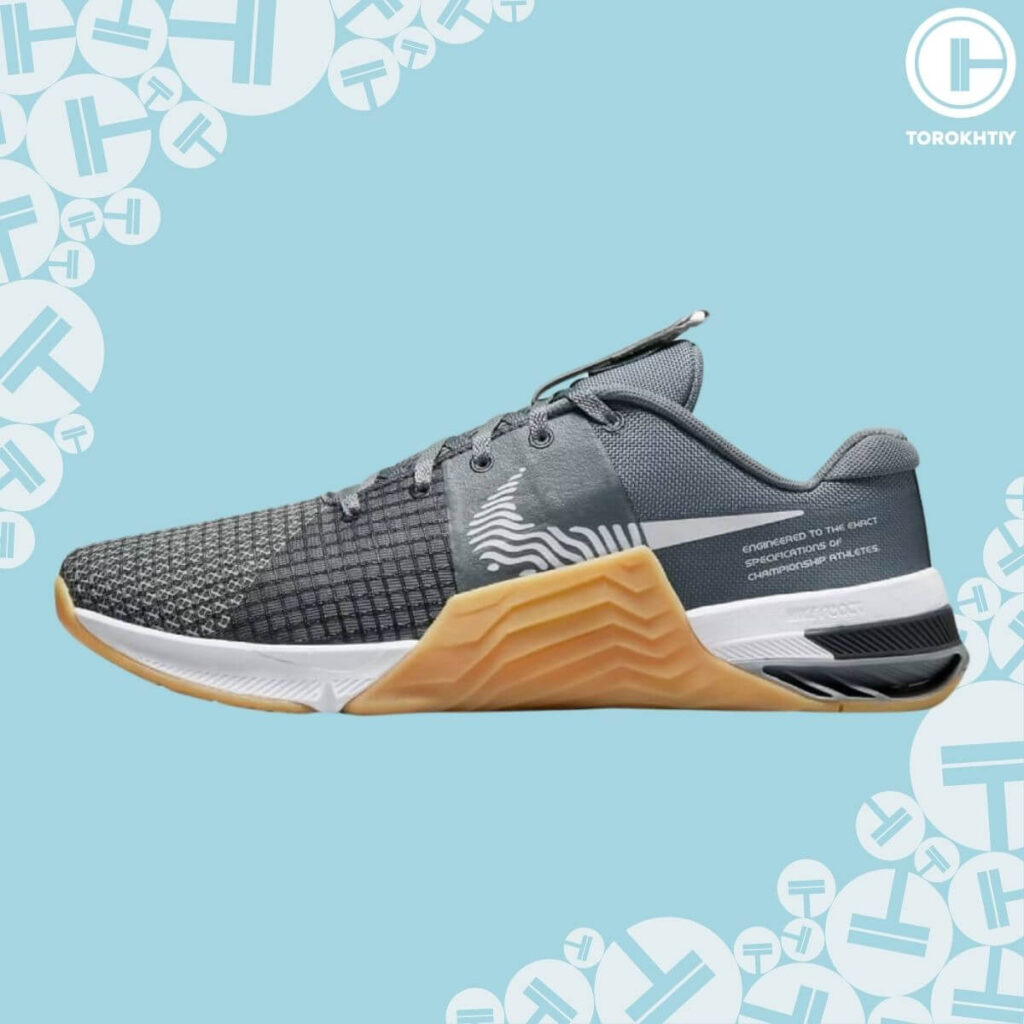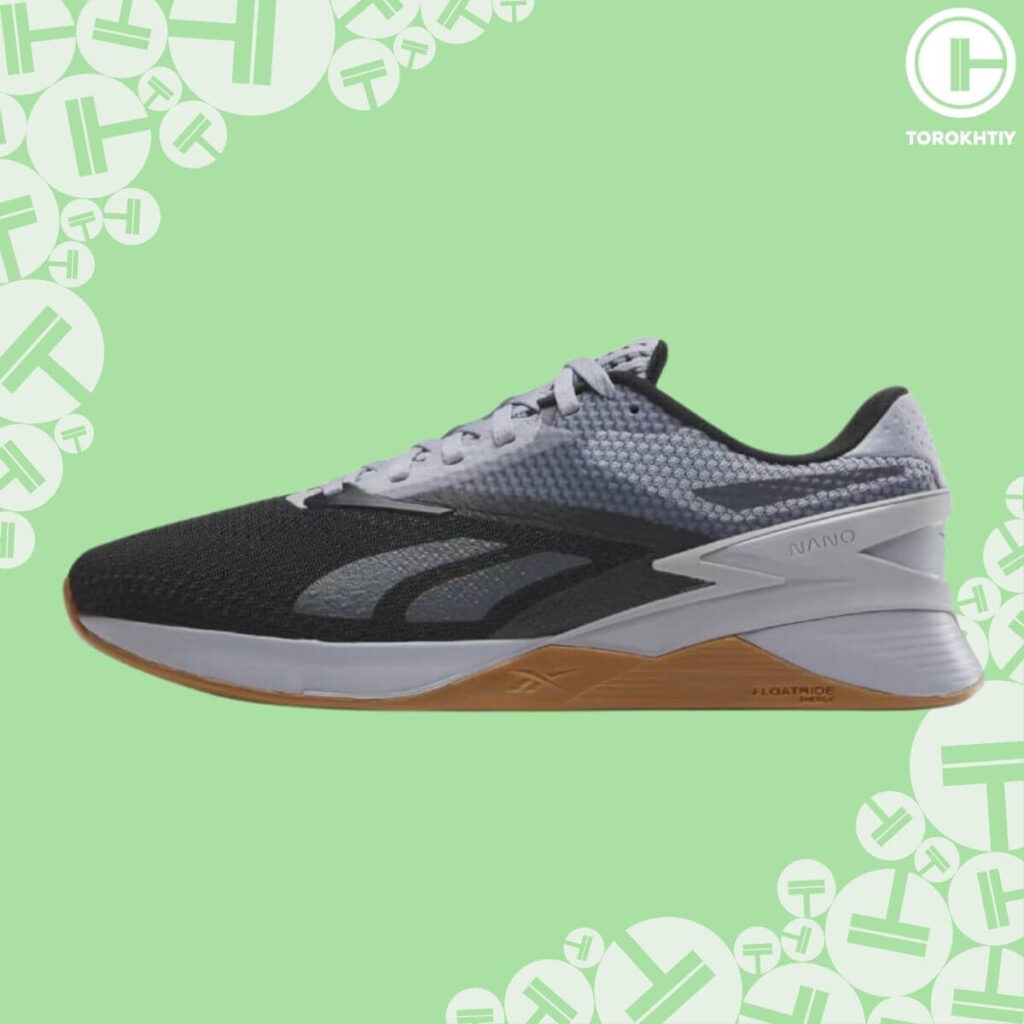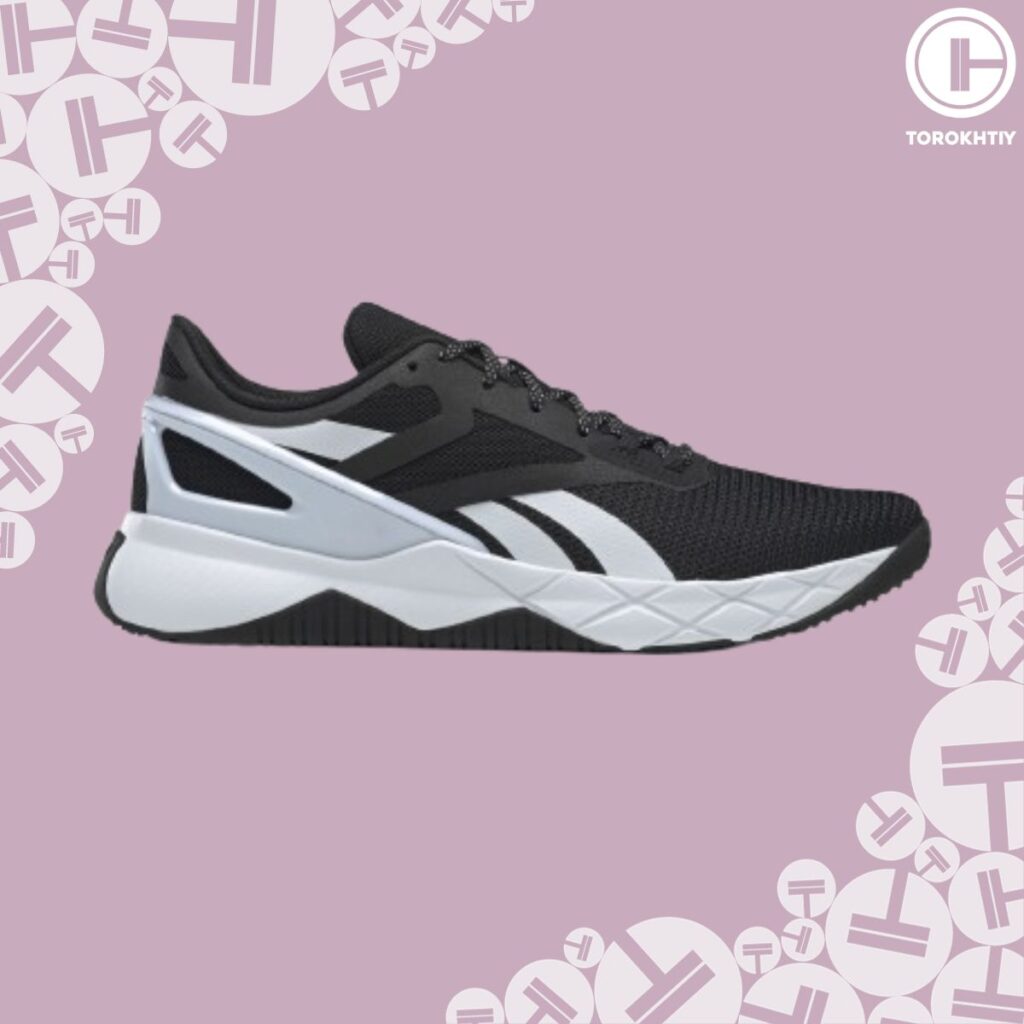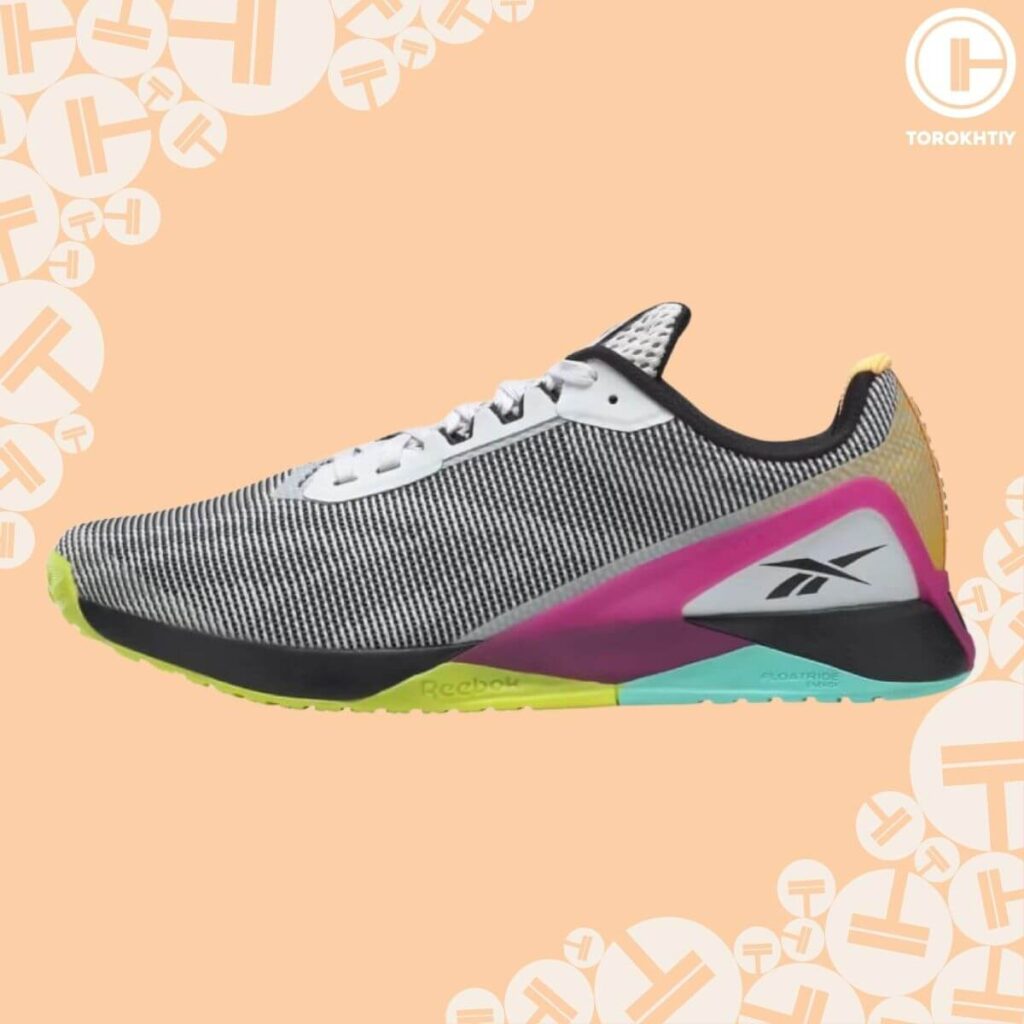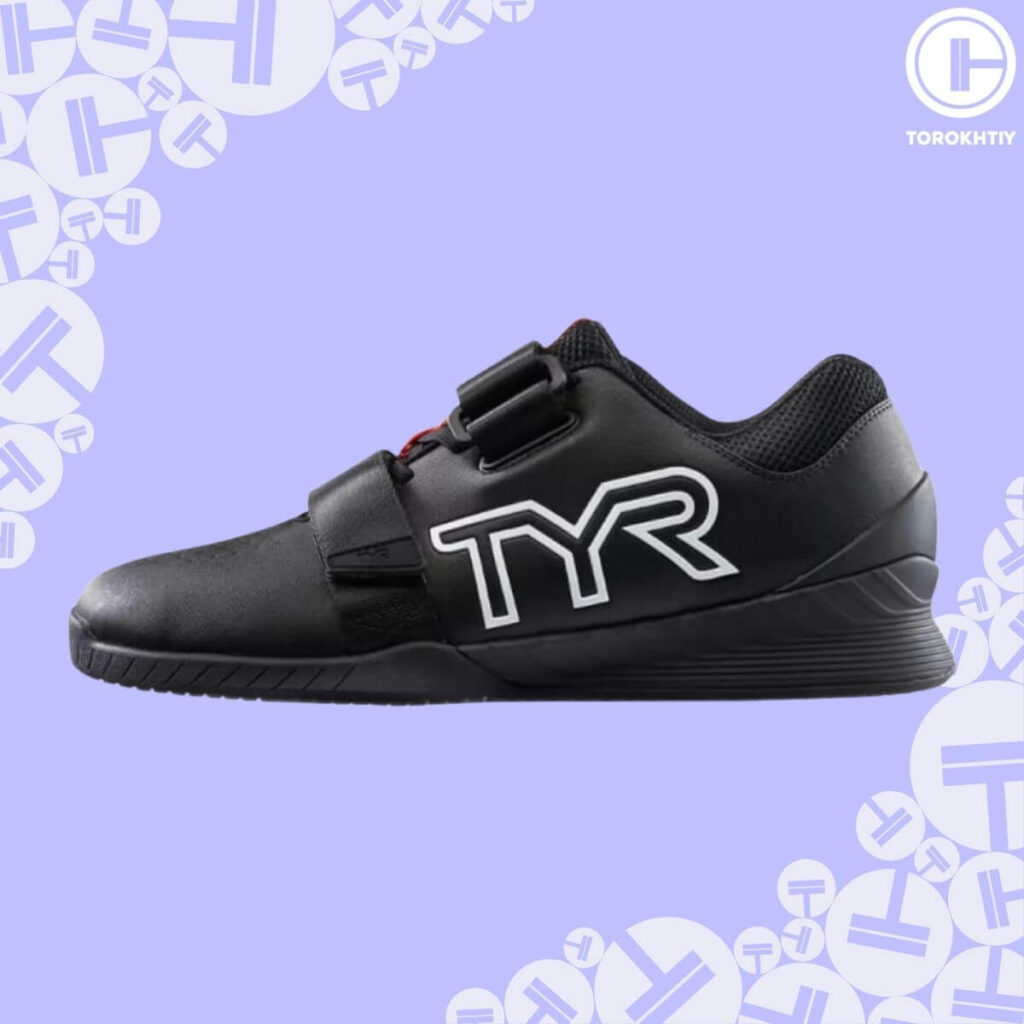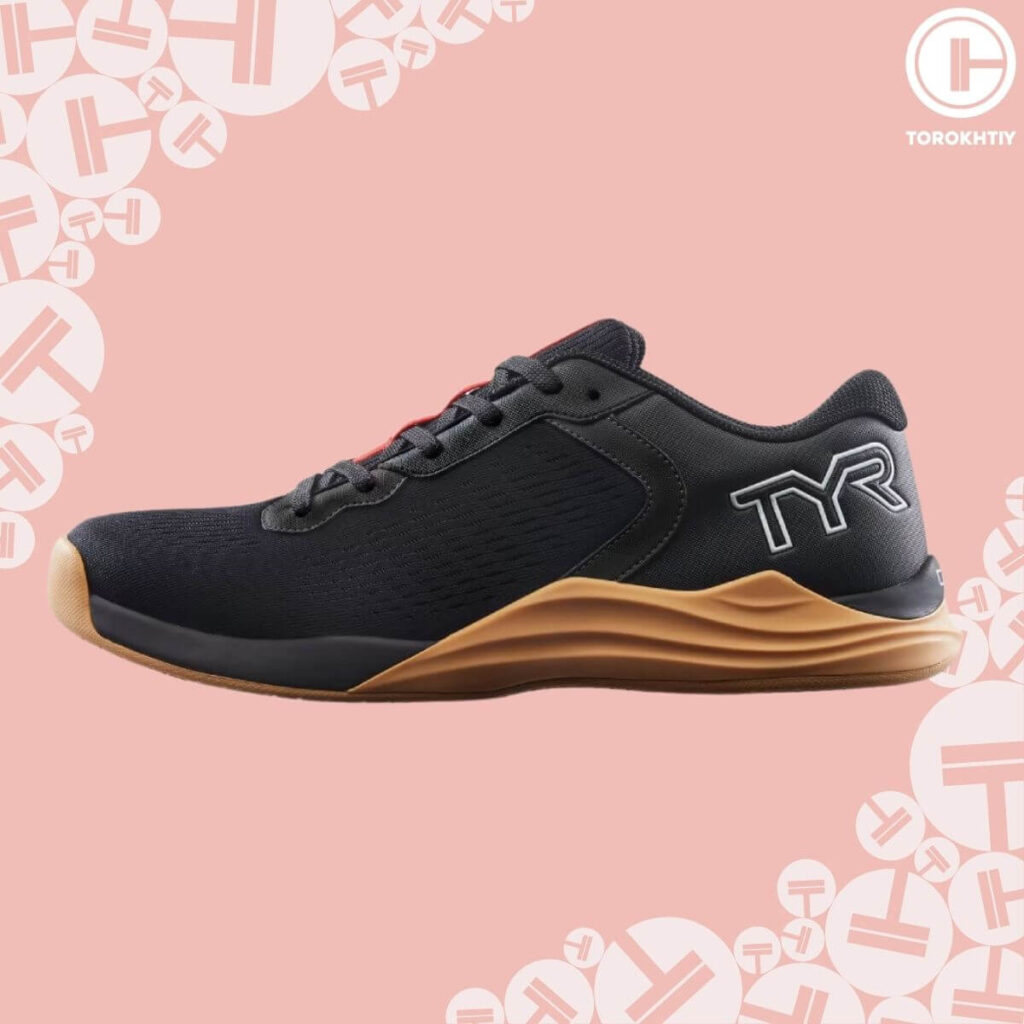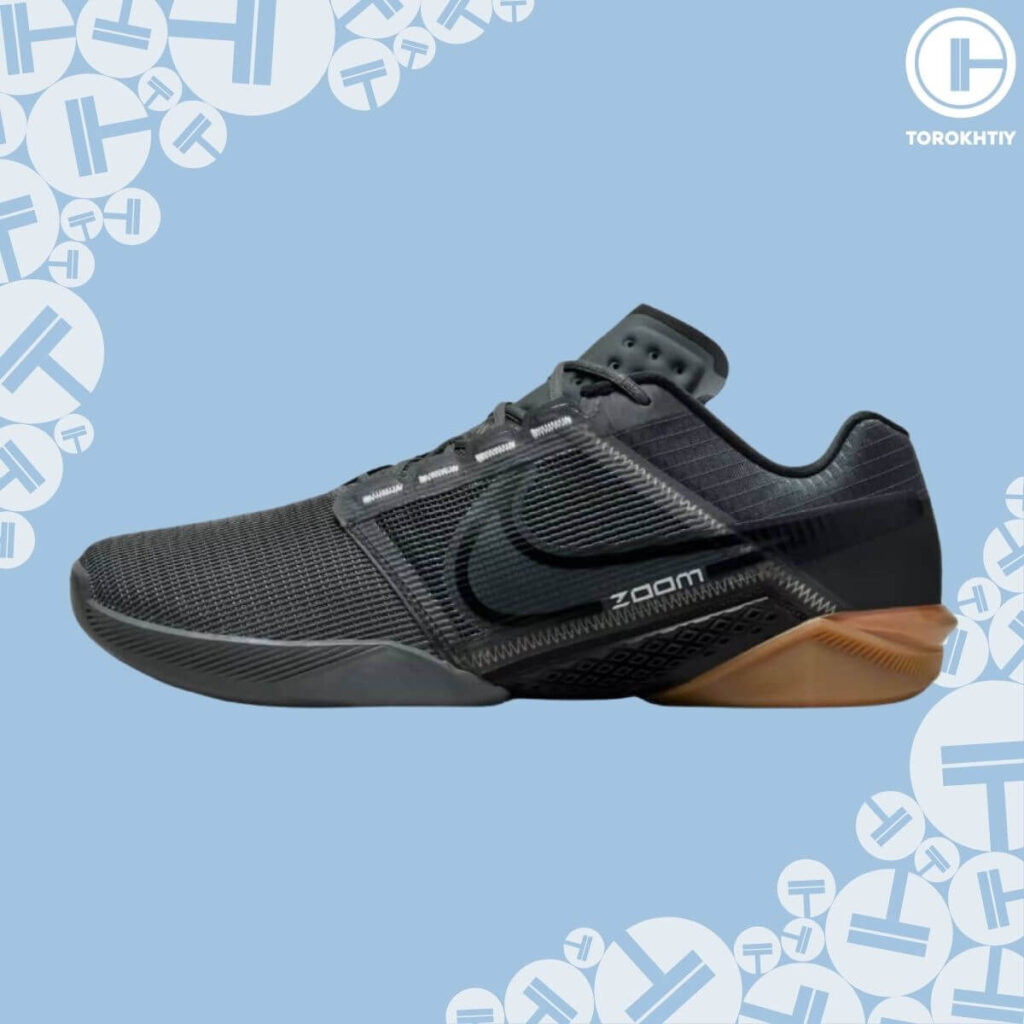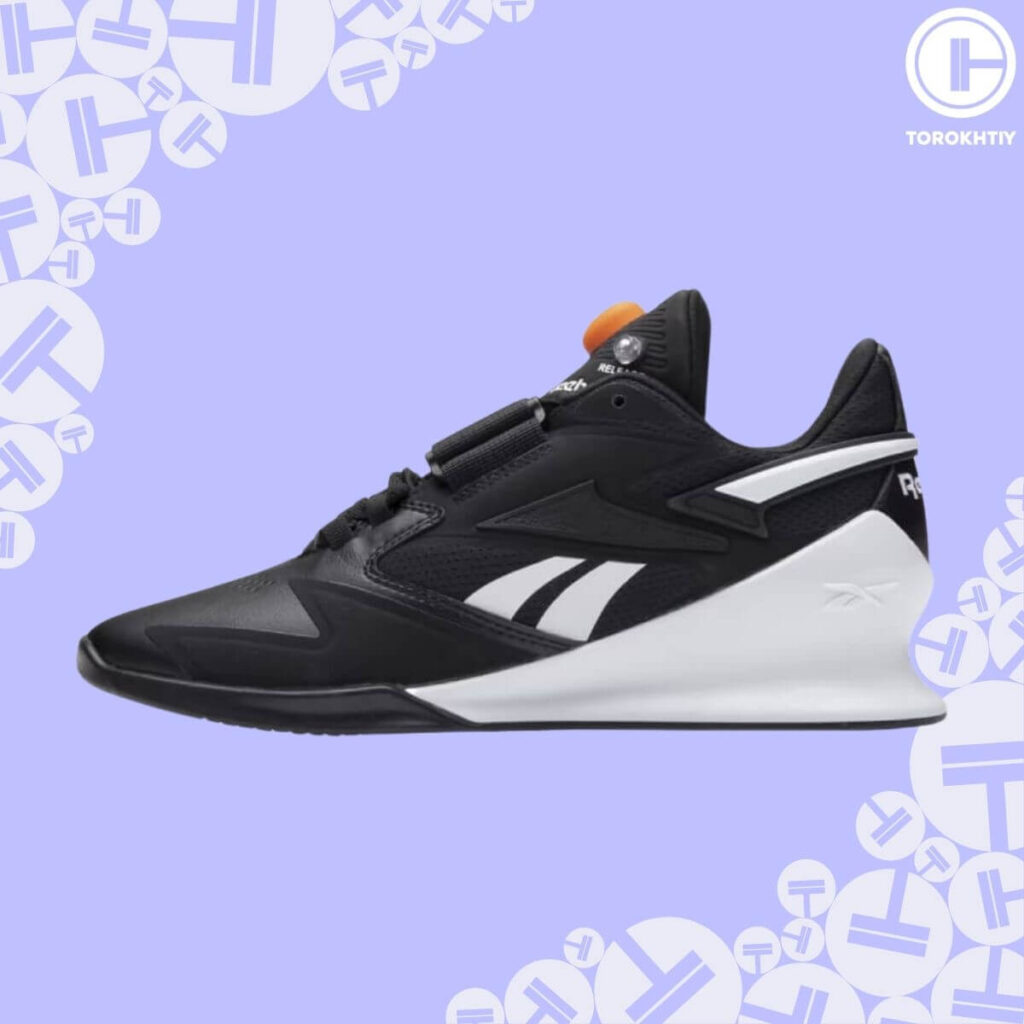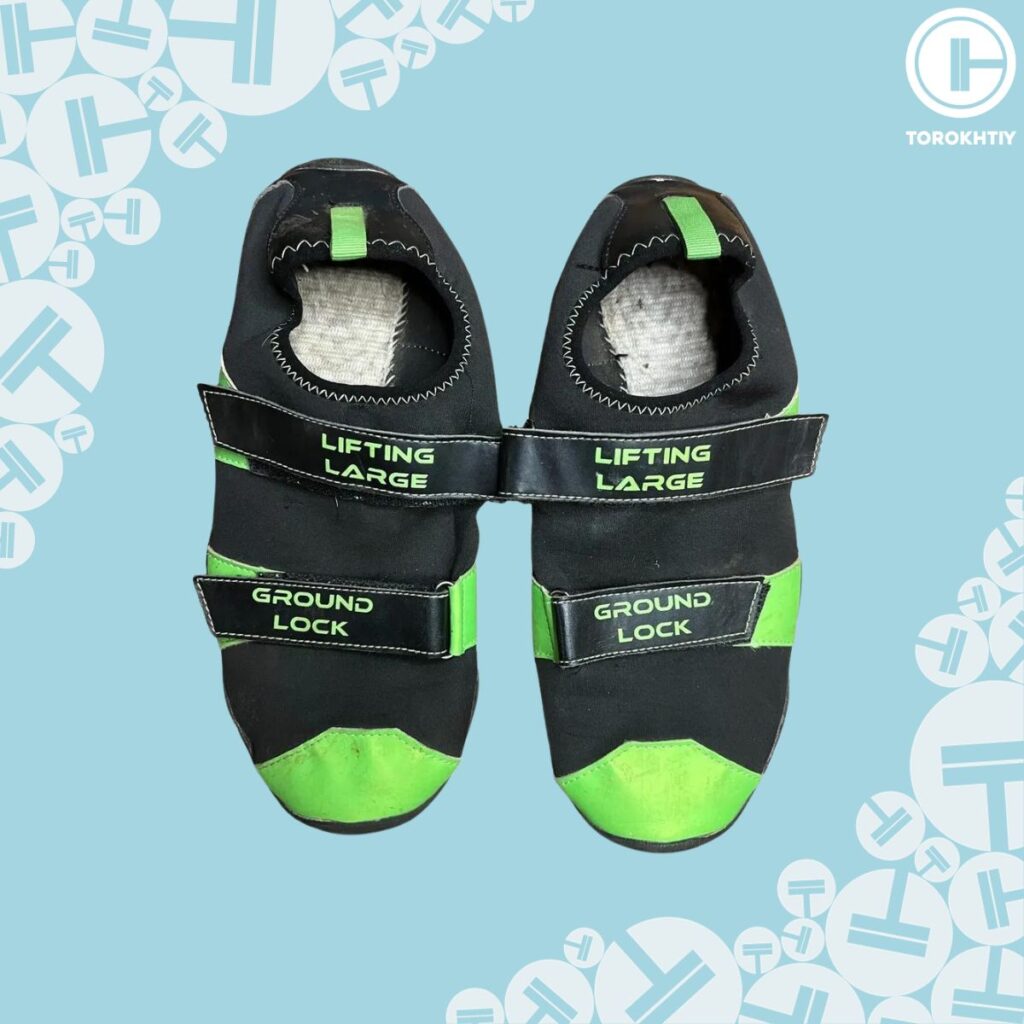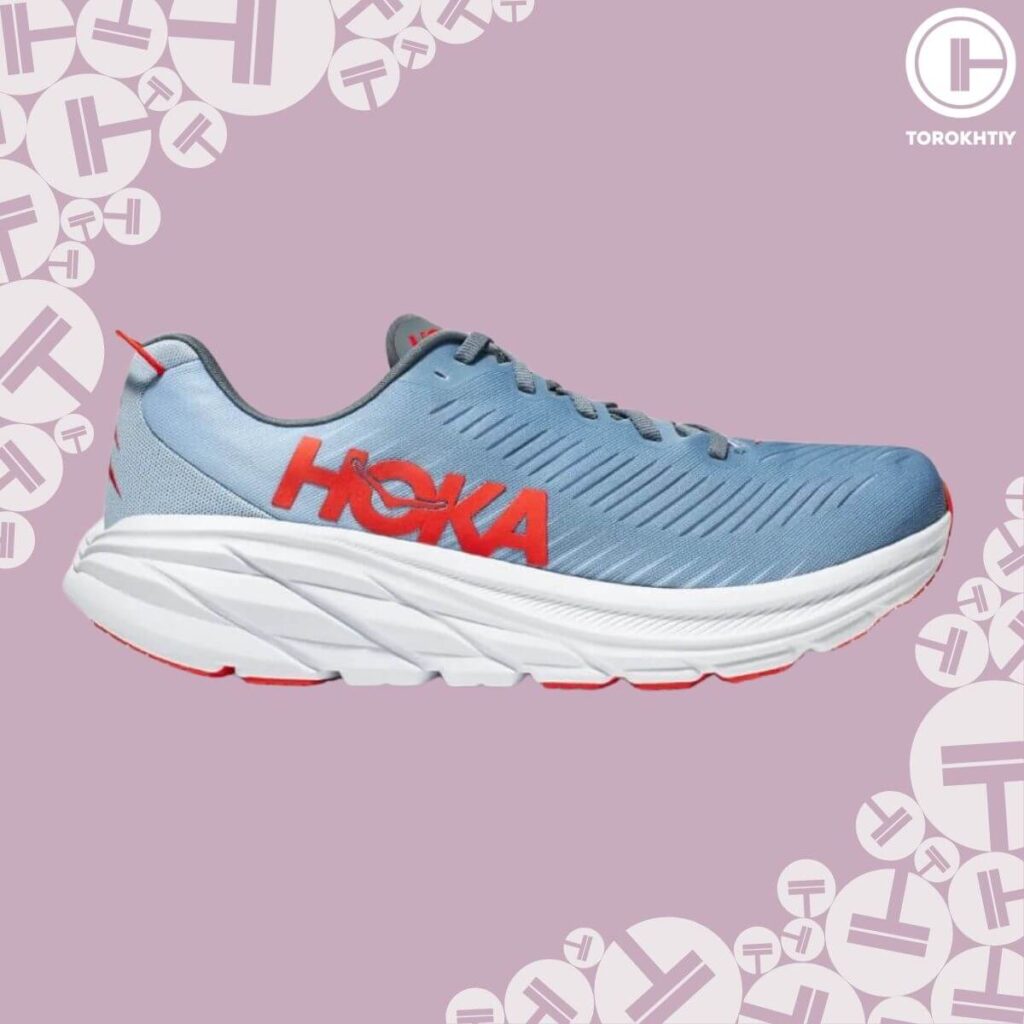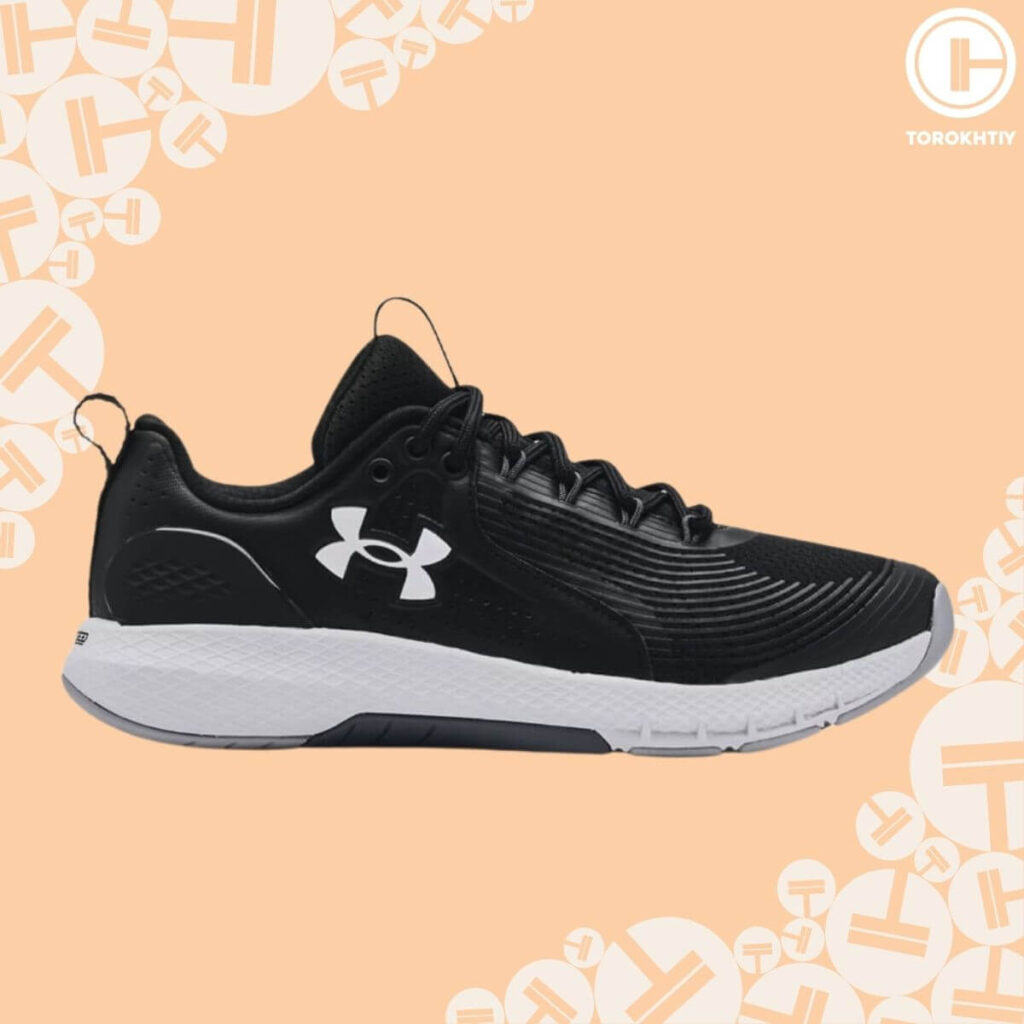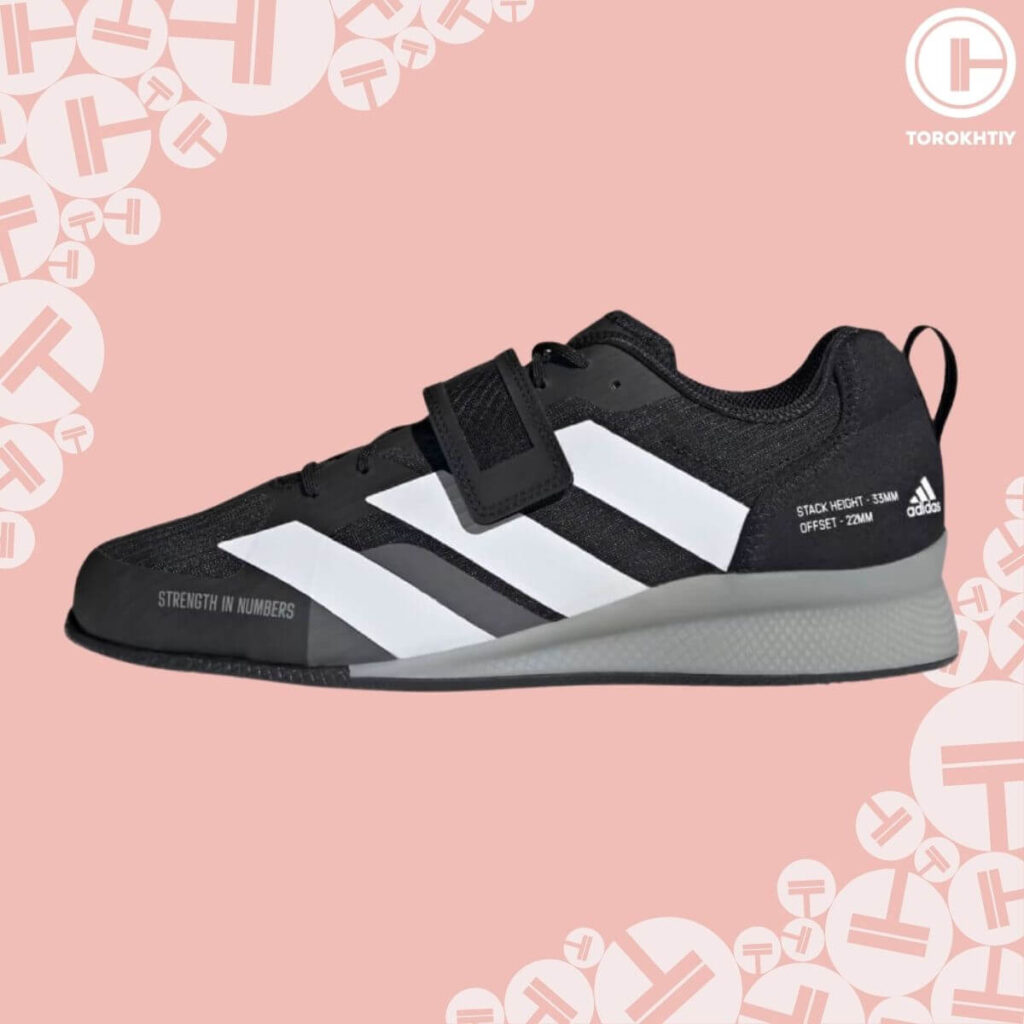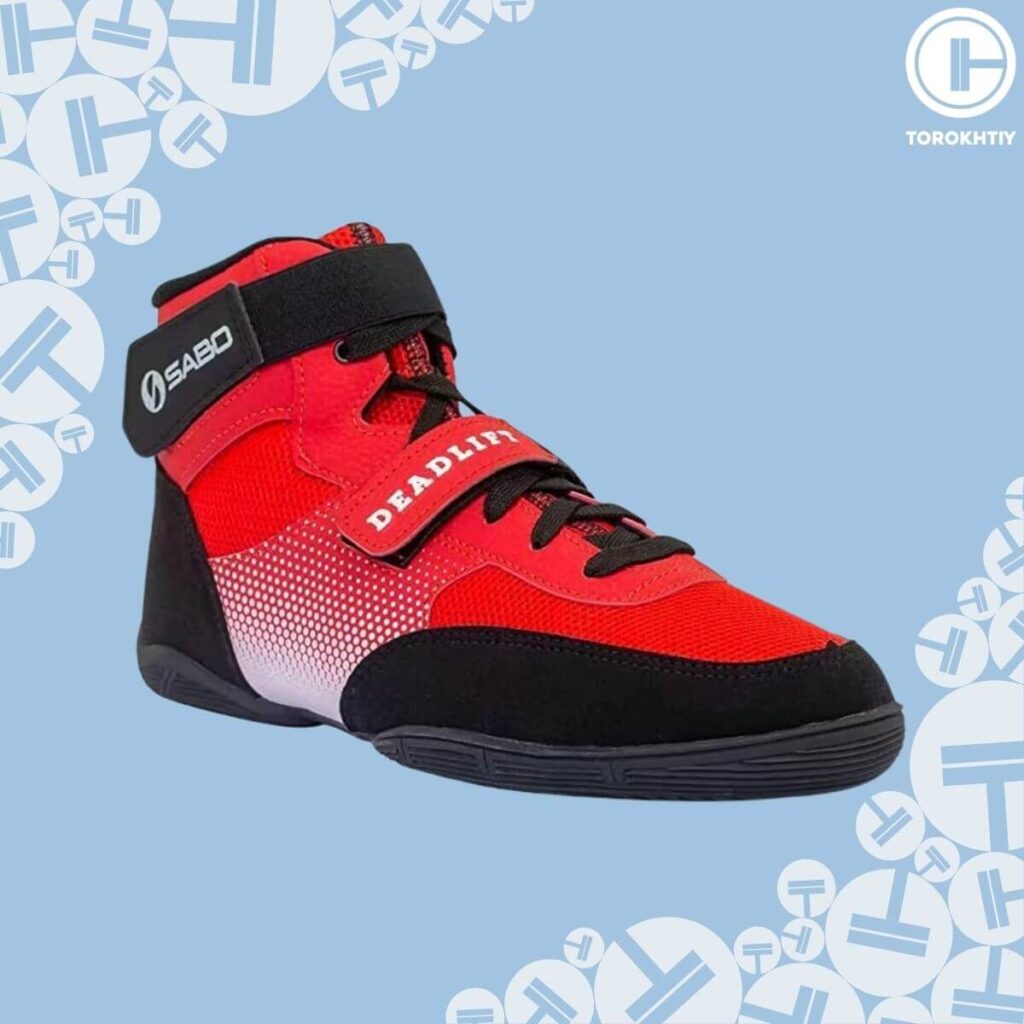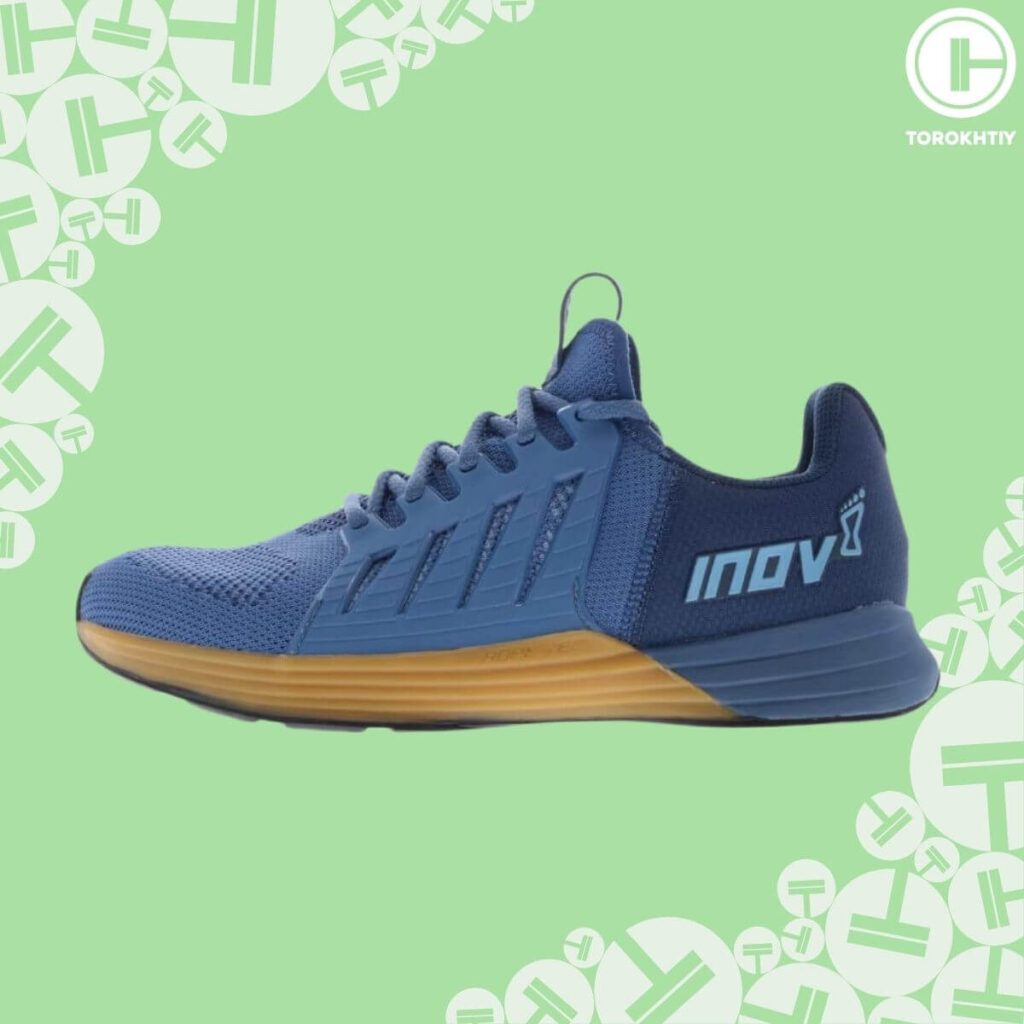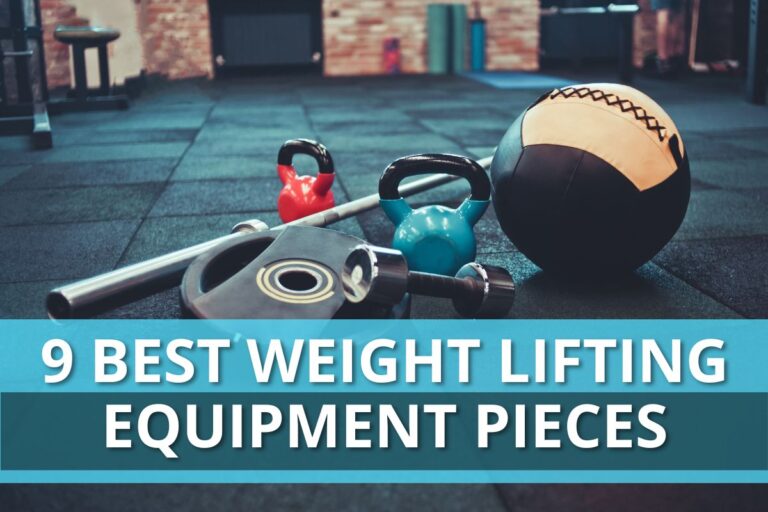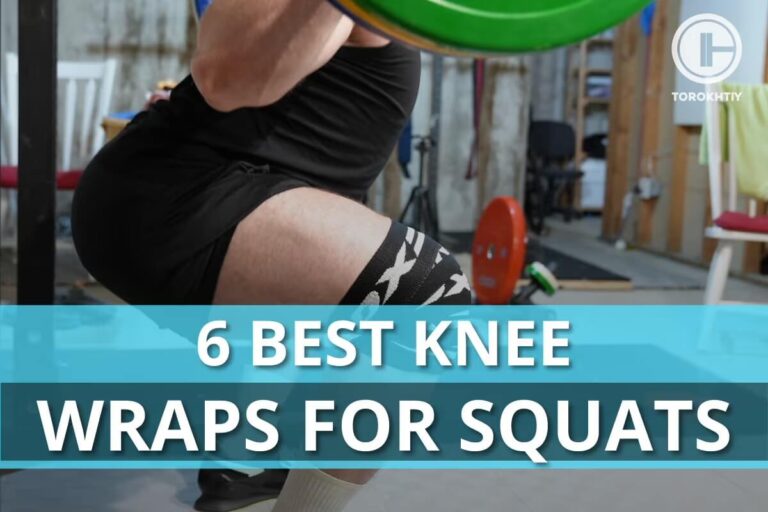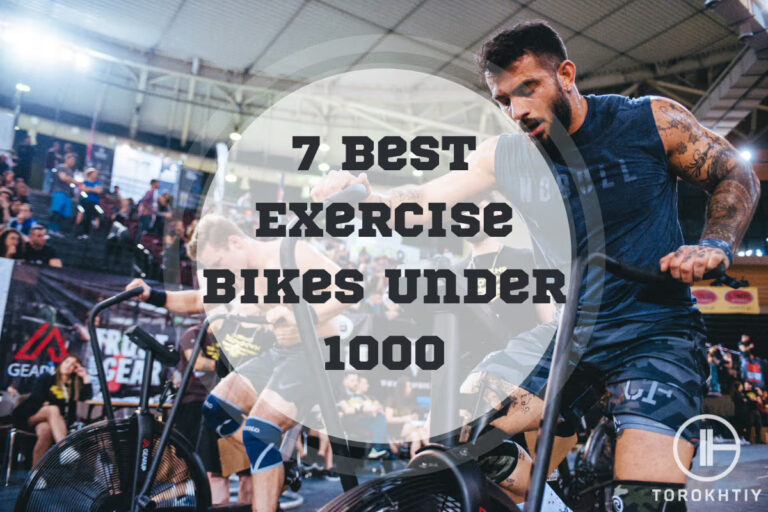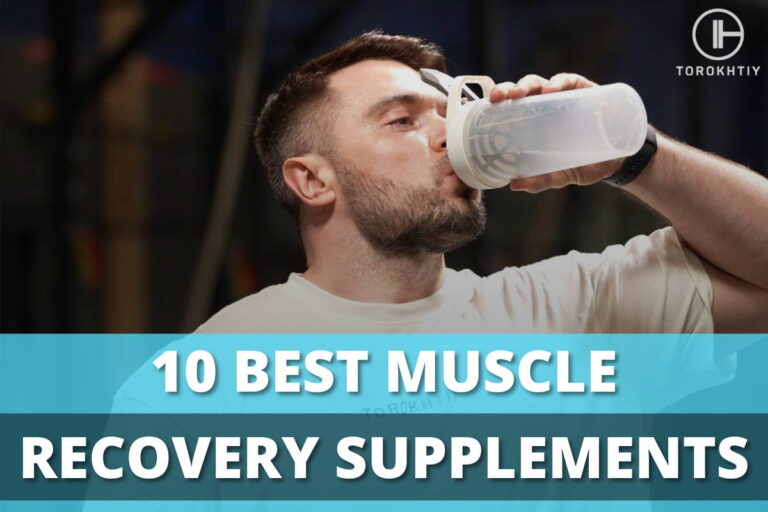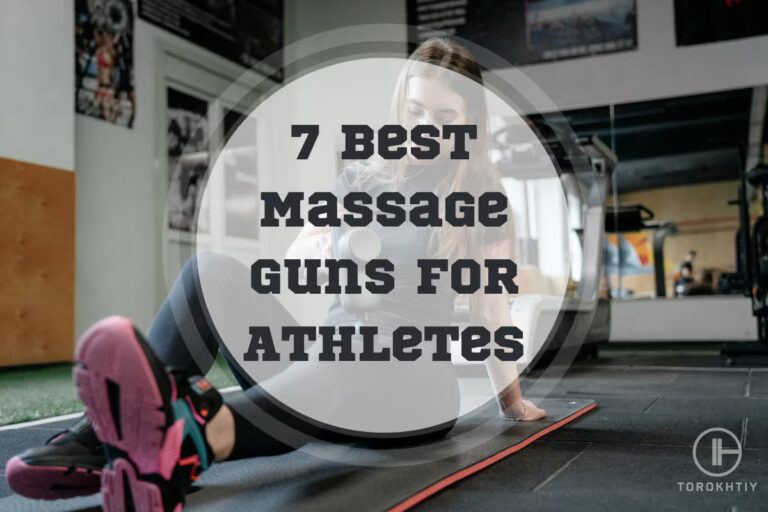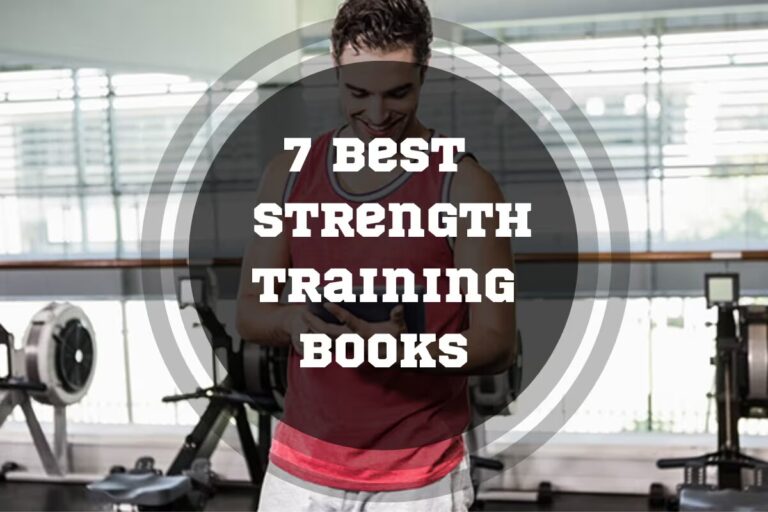14 Best Gym Shoes for Men in 2025
Reviewed by: Oleksiy Torokhtiy (21 years of Oly Lifting experience)
If you want to get the most out of your workouts, then you need to find the correct gear, and that includes finding the best gym shoes for men. Your shoes aren’t just a reflection of your personal style – gym shoes play a big part in how effective and safe your workouts are.
If the shoes you’re wearing are not right, it can hamper your performance and increase the risk of injuries. It doesn’t matter if you’re doing cardio, weightlifting, or a mix of different activities – you need the right shoes. You want comfort, good arch support, breathable materials and, of course, a good price.
How to find shoes that are going to have all of these features? Sifting through so many shoes the market offers would be a pain, and you still wouldn’t know if you chose correctly.
Don’t worry, you don’t have to spend your time browsing the Internet, we have you covered! There are 14 pairs of shoes in this men’s gym shoes review, and each has been reviewed in detail.
In a hurry?
In a hurry and can’t keep reading? How about you check out the Nike Metcon 8.
Nike’s Metcon 8 is designed to the exact specifications of championship athletes and is a remarkable addition to the Metcon series. These shoes mean business and their performance is unmatched.
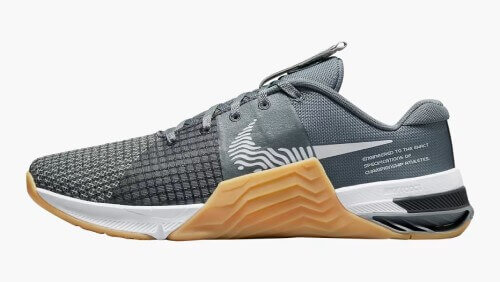
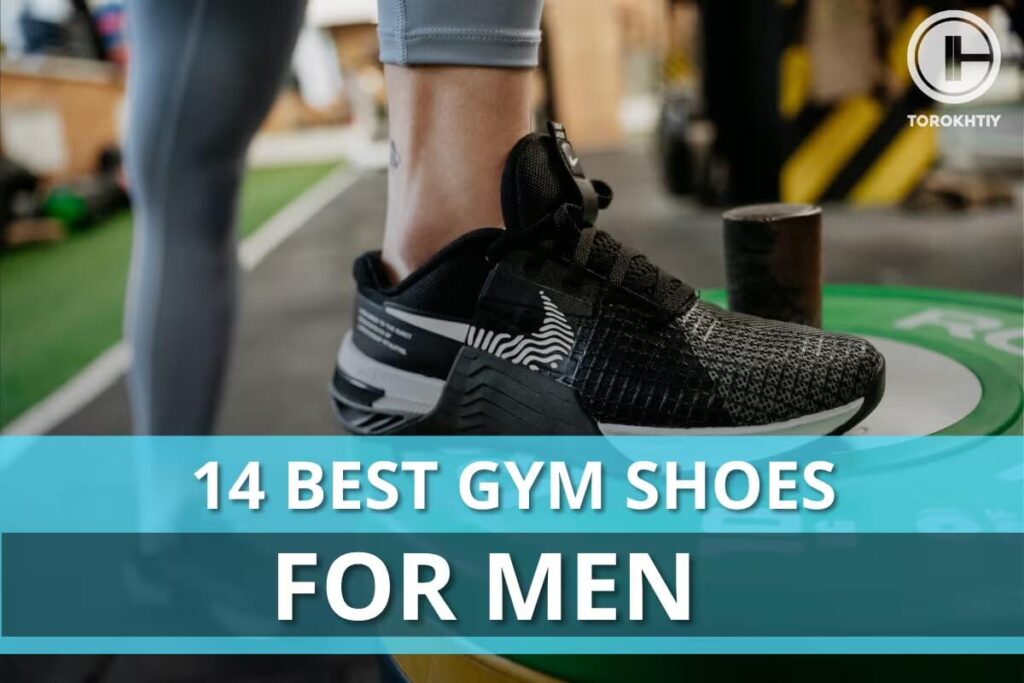
Top 14 Best Gym Shoes for Men Reviewed
- Nike Metcon 8 – Top Pick
- Reebok Nano X3 – Runner-Up
- Reebok Nanoflex TR 2.0 – Best For General Fitness Training
- Reebok Nano X1 Grit – Budget Pick
- TYR L-1 Lifter – Best Lifting Shoes For Wide Feet
- TYR CXT-1 Trainer – Best For Cross-Training
- Nike Zoom Metcon Turbo 2 – Best For HIIT/ Circuit Training
- Reebok Legacy Lifter III – Best For Olympic Weightlifting
- LiftingLarge Ground Lock Deadlift Slippers – Best Deadlift Shoes
- HOKA Rincon 3 – Best For Running
- UnderArmour Charged Commit 3 – Best For Gym And Daily Use
- Adidas Adipower III – Best For Squats
- Sabo Deadlift Shoes – Best High Top Shoes
- INOV-8 F-Lite G 300
| Product | Total | Durability | Flexibility | Breathability | Grip | Stability | Cushioning | Comfort | Responsiveness |
|---|---|---|---|---|---|---|---|---|---|
| Nike Metcon | 79.5 | 10 | 10 | 10 | 10 | 10 | 10 | 9.5 | 10 |
| Reebok Nano X3 | 79 | 10 | 9.5 | 10 | 10 | 10 | 10 | 9.5 | 10 |
| Reebok Nanoflex | 78 | 9 | 10 | 10 | 10 | 9 | 10 | 10 | 10 |
| Reebok Nano X1 | 76 | 8.5 | 10 | 9 | 10 | 9.5 | 10 | 10 | 9 |
| TYR Lifter | 75.5 | 9.5 | 9 | 8 | 10 | 10 | 10 | 10 | 9 |
| TYR Trainer | 75 | 9 | 9.5 | 8 | 9.5 | 10 | 10 | 9 | 10 |
| Nike Zoom | 74.5 | 9 | 9.5 | 10 | 9.5 | 8.5 | 9 | 9 | 10 |
| Reebok Lifter | 74 | 10 | 8.5 | 9.5 | 10 | 10 | 8.5 | 9 | 8.5 |
| LiftingLarge | 73 | 9 | 9.5 | 9 | 10 | 10 | 8 | 9 | 8.5 |
| HOKA | 72.5 | 8 | 9 | 9.5 | 9 | 8 | 10 | 10 | 9 |
| UnderArmour | 71.5 | 9.5 | 9 | 9.5 | 9 | 9.5 | 8 | 8.5 | 8.5 |
| Adidas | 71 | 9.5 | 8 | 9 | 9.5 | 10 | 8 | 9 | 8 |
| Sabo | 70 | 9 | 9 | 9 | 9 | 9.5 | 8 | 8 | 8.5 |
| INOV-8 | 69.5 | 9 | 8.5 | 8 | 9 | 9 | 8 | 9 | 9 |
1. Nike Metcon 8
Nike’s Metcon 8 is designed to the exact specifications of championship athletes and is a remarkable addition to the Metcon series. These shoes mean business and their performance is unmatched.
Metcon 8 doesn’t differ too much from the 7, but some features did receive an update. The most obvious one is the upper – it’s lighter and has improved airflow.
This feature gets overlooked sometimes, but it’s important because you can’t properly focus on your workout if you’re distracted by how uncomfortable and hot your feet are. The upper has textured overlays that are placed in high-wear areas so, even though the upper is light and breathable, it’s durable, too.
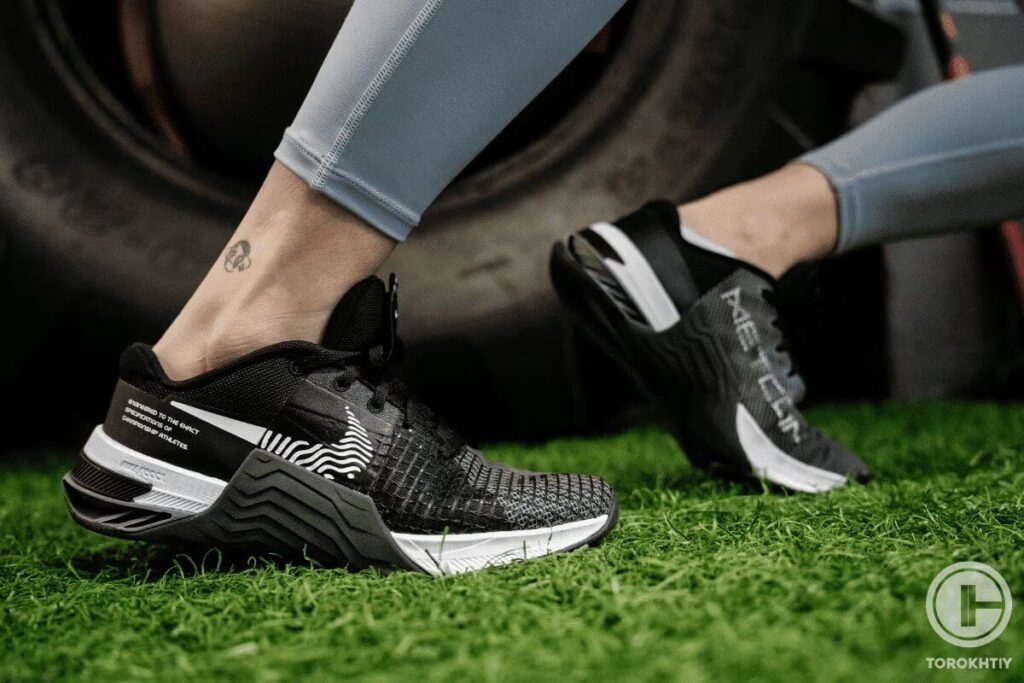
The midsole has React Foam that gives just the right amount of cushioning and support. If you’re trying to go the extra mile, this is definitely something you want because you won’t have to compromise the comfort of your feet to push your limits. The soles allow your feet to move naturally and promote a more natural and flexible gait.
Moreover, you don’t have to worry about your laces being untied during your workout – the lock-down lace tabs take care of any potential issues. There are also rubber wraps along the arch to make the shoes even more functional and improve traction and grip.
The shoe’s fit is regular but it has a wide flat heel that’s flexible and evenly distributes the weight from edge to edge. This is especially important for weightlifting because it enhances stability.
Another great feature is directional traction because of the rubber thread on the outsole. This allows you to transition from the gym floor to the outdoor surfaces seamlessly.
If you already have the Metcon 7, you may not need the 8, unless you want to collect all of them. They’re very similar and pretty much do the same thing, but the updated features do make a difference. The Metcon 8 are the best training shoes for men, and you won’t go wrong if you decide to give them a try.
Metcon 8 are directional traction because of the rubber thread on the outsole. This allows you to transition from the gym floor to the outdoor surfaces seamlessly.
Positives:
Could be better:
2. Reebok Nano X3
The Nano X3 is a blend of a top-notch training shoe with the finesse of a high-end running shoe. Its design is innovative and, although it’s more expensive than the previous Nano models, they’re worth the money because these are some of the best athletic shoes for men.
The most innovative feature is the Lift and Run Chassis system that has a dome-shaped heel piece that adapts to your workouts. If you’re lifting, for example, it compresses under the load and provides a stable platform for your heaviest squats and deadlifts. When you transition to running, it softens and allows for a natural push-off.
The Floatride Energy Foam makes your feet comfortable when you’re in motion. It’s lightweight and supportive and an absolute game-changer for people who don’t want to sacrifice performance for comfort.
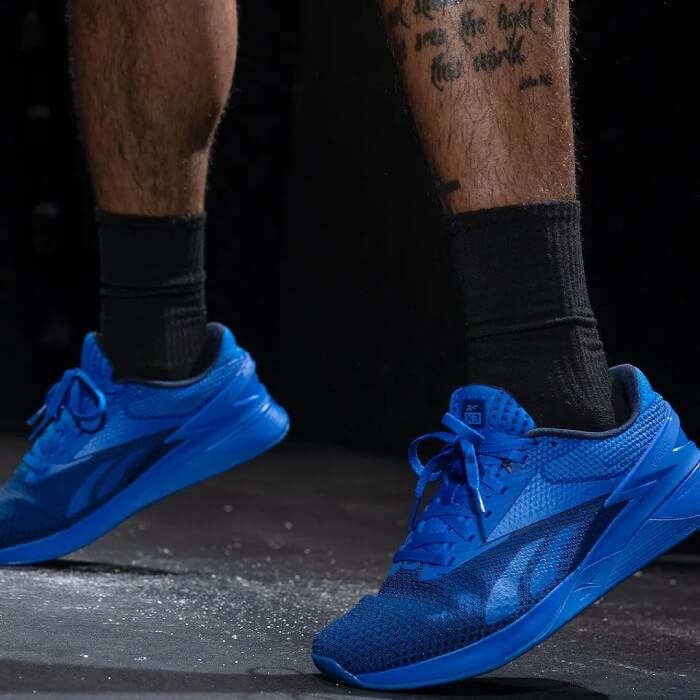
The outsole is rubber with a targeted lug pattern and provides excellent traction. These shoes were designed to be used on a lot of different surfaces so, once you’re done with the gym, you can comfortably go for a run outside, and the shoes will perform just as well.
Another thing worth mentioning is the Flexweave textile upper that’s stretchy but still supportive. Flexweave is known for its durability, so you don’t have to be too careful with these shoes.
These shoes are packed with nice features, and they’ll be a great addition to your fitness gear even if you already have the previous Nano models. If you don’t like a higher heel-to-toe drop, however, you may have some issues with these.
Unlike the previous models, where the heel-to-toe drop is 4mm, these have a 7mm drop, which may not sound like a drastic difference, but you definitely feel it once you put the shoes on.
The Nano X3 is a blend of a top-notch training shoe with the finesse of a high-end running shoe. Although it’s more expensive than the previous Nano models, they’re worth the money because these are some of the best athletic shoes for men.
Positives:
Could be better:
3. Reebok Nanoflex TR 2.0
A lot of people consider Nanoflex a more budget-friendly version of the classic Nano, and this is true up to a point. These do not have as many innovative features, and they are more basic than the previous pair. Still, if you want shoes for general fitness training, then these are the best you can find.
Something that Nanoflex and Nano have in common is the lightweight breathable upper with supportive overlays. The shoes are comfortable and can withstand any kind of workout you throw their way.
The TPU heel clip is another great feature that provides stability to the heel and makes your foot stay secure and supported. But what really sets Nanoflex apart from the competition is the
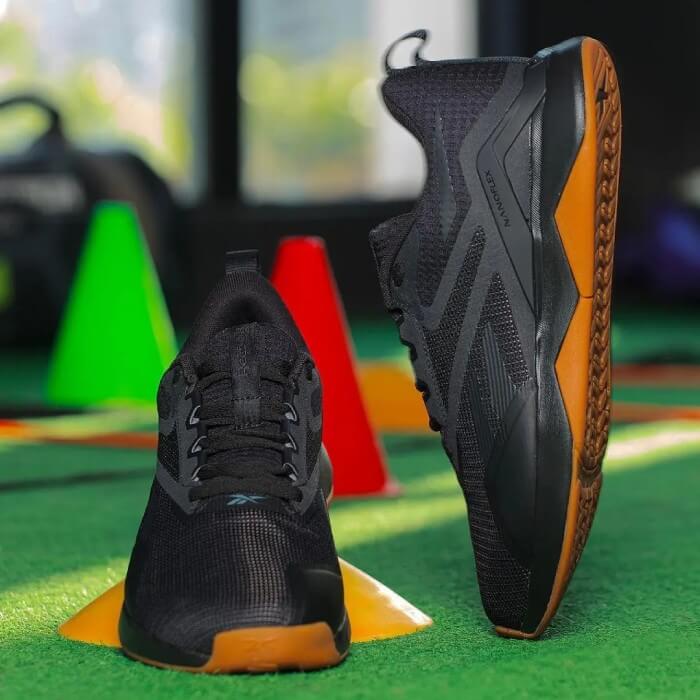
MetaSplit outsole, which is designed in a way that provides a lot of flexibility for lunges and sprints, so they’re very suitable for anything you do that requires quick transitions. These shoes can adapt to whatever you need – anything from a gym session to a sprint through your favorite park.
The fit of these shoes is regular, so it’s supposed to be suitable for a wide range of foot shapes, but they’re not the best for people with wide feet. The toe box is very narrow, and although it can be broken in a little, it’s still not enough to accommodate wide feet, but if your feet are average or narrow, this should fit just fine.
Nanoflex do not have as many innovative features, and they are more basic than the previous pair. Still, if you want shoes for general fitness training, then these are the best you can find.
Positives:
Could be better:
4. Reebok Nano X1 Grit
The Nano GX1 Grit are well-rounded workout shoes for men that don’t focus on just one type of activity but aim to be suitable for almost everything. Their quality is great and, best of all, they come at a great price.
The Flexweave knit upper has been updated with a grit pattern, and it not only looks fantastic but is also breathable.
These shoes are ready to perform straight out of the box – there’s no need to break them in and the comfortable collar gives that nice locked-in feel. The wide anatomical box improves the overall comfort because your toes have more than enough space during workouts.
The improvements go all the way to the toe shape, which has multi-directional movement. This means you can pivot, change direction, and move quickly during a lot of different exercises.
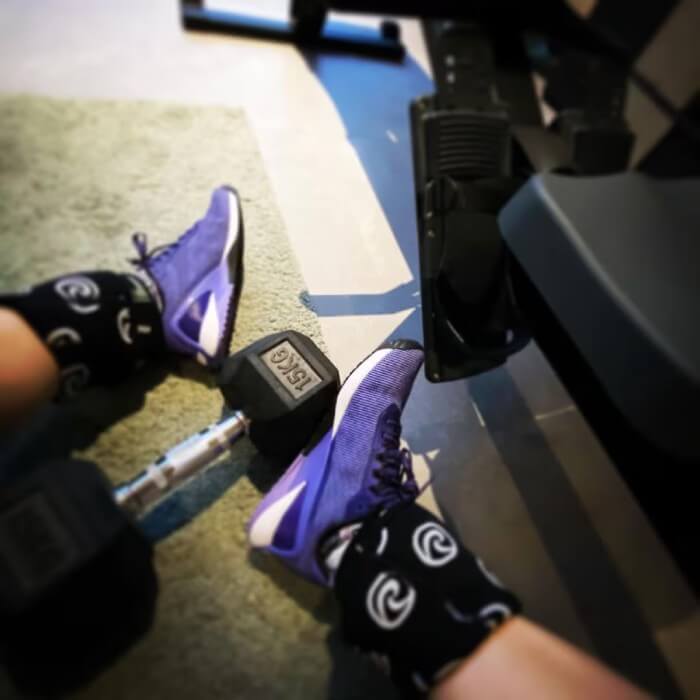
The updated heel clip is another fantastic feature and provides a lot of stability. This makes the shoes suitable for weightlifting; whether you’re doing snatches, cleans, or squats, these shoes will keep your feet stable and supported.
The Floatride Energy Foam offers next-level cushioning. This feature is particularly useful for people who have running as part of their routine, because it means they can easily transition from whatever activity they’re doing to running without having to switch shoes.
Although these men’s training shoes have a number of amazing features, they’re not the most durable, especially in the soles, so if you want to make sure they don’t get too damaged, it would be best to use them indoors.
The Nano GX1 Grit are well-rounded workout shoes for men that don’t focus on just one type of activity but aim to be suitable for almost everything. Their quality is great and, best of all, they come at a great price.
Positives:
Could be better:
5. TYR L-1 Lifter
If you’ve ever been in the market for a specialized pair of shoes, then you must have heard about TYR – they’re one of the most well-known brands when it comes to specialized athletic apparel. These shoes are unisex, but as far as women’s gym shoes go, these are the best. They have an anatomical toe box, adjustable double straps, and a flat sole for optimal stability.
When you first get these, they may feel a bit awkward, and that’s because you need to break them in a little. This is usually the case with leather shoes, so it’s not something that should worry you.
They’re actually very comfortable, partly due to the anatomical toe box that provides a natural, non-constrained fit. If you have experience with weightlifting, you know how much precision and control it demands and with this kind of toe box, your feet will be able to find their most secure and powerful position.
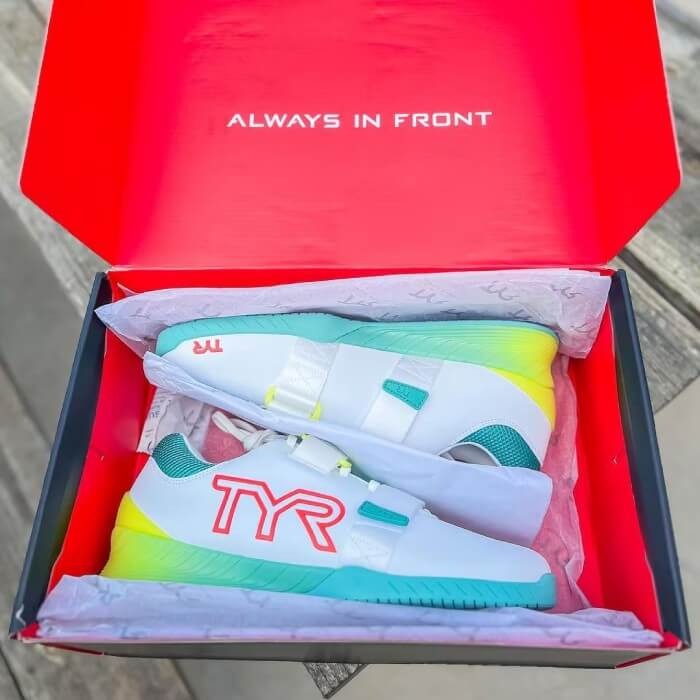
The 21mm heel-to-toe drop makes you keep your torso upright, which can be a game-changer if you want to improve your squat depth. In terms of stability and support, the L-1 Lifter is fantastic.
It has back heel support, which makes you stay well-anchored and gives you a solid foundation for powerful lifts. This is a very important feature for things like squats, snatches, and cleans, where you have to prevent any unnecessary movement.
The double straps at the midfoot are something a lot of people will appreciate because they make the fit secure and customizable, while the flat wide sole makes the shoes more stable.
Like many other shoes with leather uppers, the L-1 Lifter struggles with breathability. There are no perforations in the upper, so your feet won’t stay as cool and dry as they will with shoes that have mesh uppers.
These shoes are unisex, but as far as women’s gym shoes go, these are the best. They have an anatomical toe box, adjustable double straps, and a flat sole for optimal stability.
Positives:
Could be better:
6. TYR CXT-1 Trainer
The CXT-1 Trainer is a very versatile shoe – it’s a combination of performance, stability, and durability. It has a few really interesting features and is good for both training and competitions.
Something that stands out right away is the stability platform. Anyone who lifts or has intense training routines knows how important stability is, and these shoes will provide you with a solid base that ensures you stay grounded.
Just think about exercises like snatches, squats, or clean & jerks and how much it means to know that you have a stable foundation.
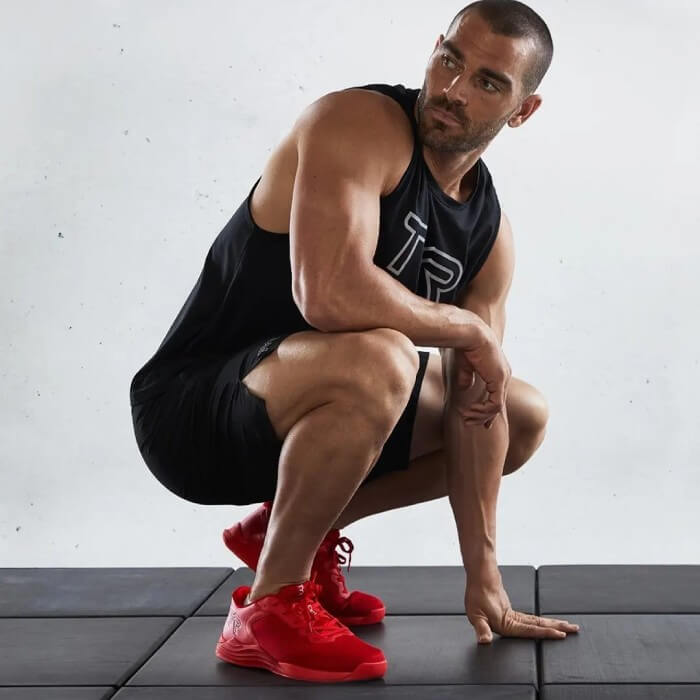
Another great thing about these men’s gym shoes is the 9mm heel-to-toe drop. It’s quite a bit higher than what most people prefer, but once you get used to it, you’ll love it. It promotes good posture and positioning for weightlifting.
The NRG foam midsole (which is basically TYR’s version of EVA midsole) is responsive and provides the right amount of cushioning, which is important for athletes who transition between different types of exercises. The mesh upper is nice and breathable and doesn’t seem flimsy, which is an issue a lot of mesh uppers have.
Since this is a review, it’s only right to mention a flaw or two. This is not anything too serious, but the insoles are just plain annoying. They slide around and shift, so you’ll probably end up taking them out. It’s a drawback many people have pointed out, so fingers crossed TYR decides to fix this in future models.
The CXT-1 Trainer is a very versatile shoe – it’s a combination of performance, stability, and durability. It has a few really interesting features and is good for both training and competitions.
Positives:
Could be better:
7. Nike Zoom Metcon Turbo 2
Nike’s Zoom Metcon Turbo 2 combines a lightweight design with responsiveness and the result is a shoe that works perfectly for high-intensity workouts and dynamic training regimens. With these exercise shoes for men, you’ll get all the benefits of the Turbo design and Zoom Air technology.
For those looking for speed and agility during their workouts, these shoes will be an ideal companion. The Zoom Air cushioning provides unmatched responsiveness, it’s almost spring-like. It’s comfortable and functional at the same time.
Of course, there has to be a mention of the shoes’ breathability. These are some of the most breathable shoes you’ll find, and the quality of the mesh they used for the upper is surprisingly good.
The mesh is often a hit or miss, and the possible problem with it is that it will make the shoes a lot less durable because it will break apart. Luckily, the Zoom Metcon Turbo 2 doesn’t have this issue.
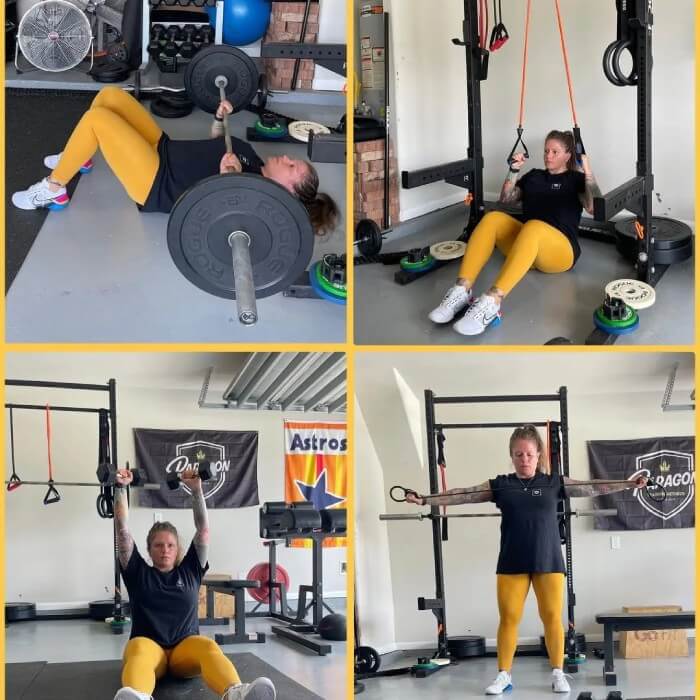
The heel is wide and flat and, in theory, good for weightlifting. If you’re going to lift lighter weights, then these shoes will be okay, but as soon as you increase the weight, you’ll notice that there’s not enough stability to make these suitable for weightlifting.
They’re almost squishy; thus, while they’re very comfortable, they’re just not good for weightlifting.
The soles are nice and grippy, and the rubber is of great quality. It’s flexible enough for all dynamic workouts and seems like it can take a beating.
Overall, these shoes are perfect for HIIT and circuit training, but they do not perform well for weightlifting.
Nike’s Zoom Metcon Turbo 2 combines a lightweight design with responsiveness and the result is a shoe that works perfectly for high-intensity workouts and dynamic training regimens.
Positives:
Could be better:
8. Reebok Legacy Lifter III
Reebok’s idea was to make lifting shoes that perform well but that are also comfortable, and they managed to do it. The Legacy Lifter III are hands down the best gym shoes for weightlifting.
This model has an inflatable pump technology that takes adjustable fit to a whole new level, and you’ll be able to fine-tune them to exactly how you want them to fit.
Since these are weightlifting shoes, their primary purposes are support and stability. The textile upper combined with the interior lining make them breathable, so your feet stay dry, and the midfoot strap makes them more secure and supportive. They also have a raised heel with a TPU clip, which adds to stability.
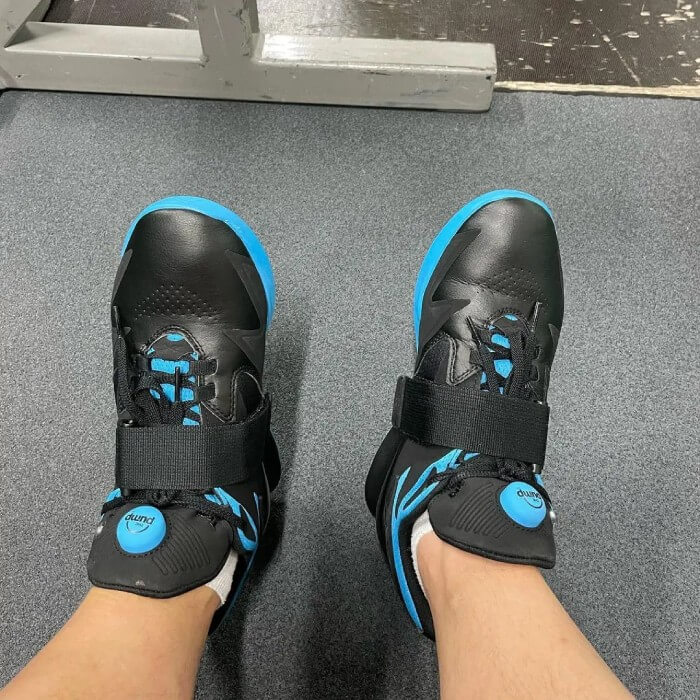
The grip rubber outsole is one of the best features, and it’s been thoroughly tested to make sure it provides reliable traction and protection. You’ll have absolutely no concern about the loss of grip or slipping with these — they’ll stay firmly in place.
Weightlifting shoes are usually heavier, and that’s how you want them to be because stability is paramount.
These, however, are heavier than expected. It can be good or bad, depending on your preferences, but most people will probably be bothered by the weight of these shoes. To be fair, this is something that you can get used to, and once you do, you’ll have no problem with it.
The Legacy Lifter III are hands down the best gym shoes for weightlifting. This model has an inflatable pump technology that takes adjustable fit to a whole new level.
Positives:
Could be better:
9. LiftingLarge Ground Lock Deadlift Slippers
When it comes to deadlift, no shoes are better than the Ground Lock Deadlift Slippers by LiftingLarge, who started designing these slippers in 2018 and refused 9 out of 10 designs. Talk about commitment to excellence!
Something that’s a very common issue with shoes of this kind is the loose material on the foot.
You know that feeling when the shoe feels loose on your foot, so you don’t feel that secure in them and you keep focusing on that annoying feeling rather than on your lifting. These shoes don’t have that issue — they feel very secure. There are 2 Velcro straps that go over the midfoot to lock your foot firmly in place.
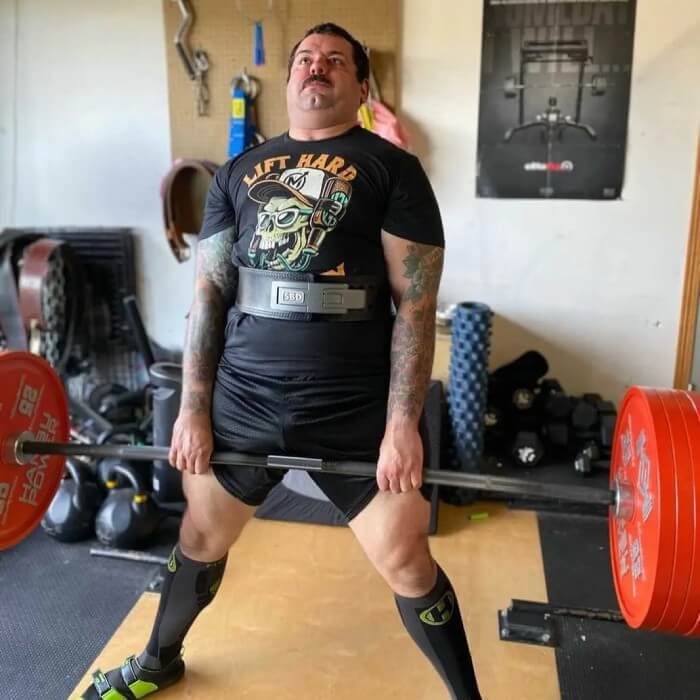
The removable insert is a great feature, especially for those who want to feel like they’re standing barefoot on the floor. If you’re not a fan of this, that’s completely fine, because the shoes come with 4mm and 6mm inserts, so you’ll be able to adjust them to your liking.
When it comes to performance, these shoes are perfect: your feet will be flexible and you won’t have to worry about slipping. You’ll probably forget you have them, they’re that good!
The sizing is the only thing that could use some improvement, because these run half a size large, so keep that in mind. But that’s really all you can complain about with these – they provide outstanding grip, are very well designed, and even come with a 1-year warranty.
When it comes to deadlift, no shoes are better than the Ground Lock Deadlift Slippers by LiftingLarge, who started designing these slippers in 2018 and refused 9 out of 10 designs.
Positives:
Could be better:
10. HOKA Rincon 3
The Rincon 3 has received some updates in the form of an asymmetrical tongue, a thinner pull tab, and a vented mesh upper. If you own any of the previous models, you pretty much know what to expect with these, but they would still be a good addition to your men’s workout sneakers arsenal.
Hoka made the Rincon 3 to prioritize speed and lightness, which makes these shoes ideal for runners. You don’t need to break them in because they’re soft and comfortable right out of the box.
They have exceptional cushioning that will make you feel like you’re running on clouds. With them being so lightweight, it’s pretty impressive to see the amount of cushioning they have. They are better for indoor use because the soles are not too durable.
Anyone who’s into running knows that breathable shoes are a must, and Hoka took that into account when making these. They’re very breathable and will keep your feet dry and cool.
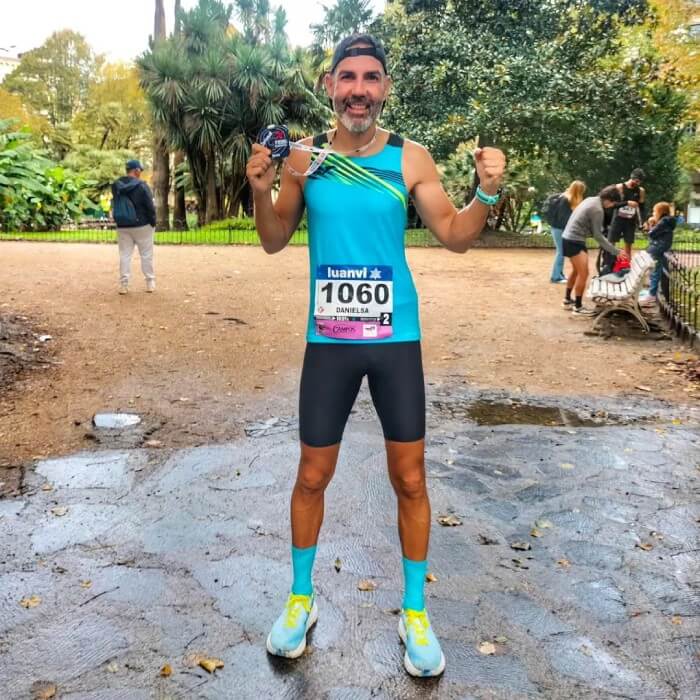
The midsole has enhanced rubber coverage, which does make the shoes more durable but still not durable enough to let you run outside without worry. Nonetheless, this type of midsole contributes a lot to responsiveness.
Every step you take is cushioned and supportive, which is something your joints will thank you for. Running can be tough on your joints, so always make sure to wear shoes that can absorb some of the impact.
The outsole is made of light zonal rubber, which makes the shoes grippy, and the MetaRocker technology makes your stride smoother and more efficient.
With them being so plush and soft (almost fluffy), you can’t expect a great amount of stability. But if you only use them on an even terrain, that shouldn’t be a big deal.
The Rincon 3 has received some updates in the form of an asymmetrical tongue, a thinner pull tab, and a vented mesh upper.
Positives:
Could be better:
11. UnderArmour Charged Commit 3
Who says you have to spend a ton of money to get good quality shoes? Charged Commit 3 has a lot to offer and won’t make a dent in your bank account.
The mesh upper with textured overlays ensure complete breathability, and you can focus on your training without any discomfort caused by sweat or heat. The dual-external heel counter hugs your foot and provides stability.
This feature is important for anyone that does activities that require quick lateral movements or changes in direction. With shoes that are stable like these, you can safely push your limits.
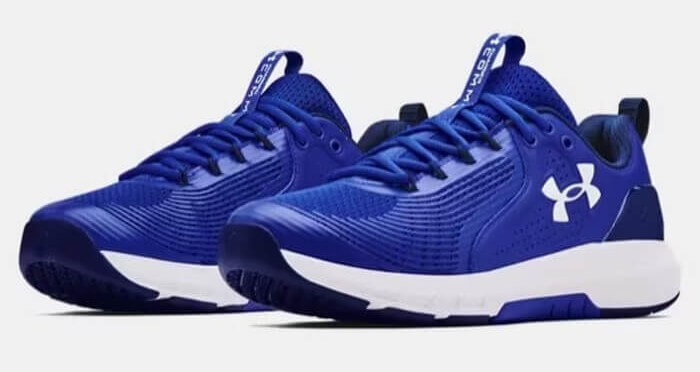
Another thing that adds to stability is the leather mid-foot saddle that’s strategically placed to make sure your foot feels secure during whatever you decide to do. You’ll notice that these men’s fitness shoes make it easier to maintain correct form and posture and alleviate some of the stress put on the midfoot area.
The cushioned sockliner molds to your foot, and if there was more of it, it would be super comfortable. Unfortunately, these shoes don’t have the same amount of cushioning as some of the previous pairs, and they’re not the best when it comes to shock absorption.
The cushioning is not so thin that you’d feel every pebble you walk across, but your joints will receive more impact than they would with some of the more cushioned shoes. They also feel a tad flat, like they’re missing a little bit of an arch.
Charged Commit 3 has a lot to offer and won’t make a dent in your bank account. You’ll notice that these men’s fitness shoes make it easier to maintain correct form and posture and alleviate some of the stress put on the midfoot area.
Positives:
Could be better:
12. Adidas Adipower III
Since Adipower is so popular, it’s no wonder Adidas keeps upgrading it and coming out with new models. The Adipower III received some updates and now it’s better than ever.
The heel height has been raised and is now at 22 mm for optimal positioning and balance, and the high-density TPU midsole gives you that locked-down feel.
The upper is made of a strong ripstop material that’s both durable and breathable, and the forefoot has some reinforcement on the inside to provide lateral support. This results in a more controlled lifting experience because your foot will stay securely in place.
The closure is a combination of a hook-and-loop strap and traditional laces, so you can adapt the shoe to your foot precisely.
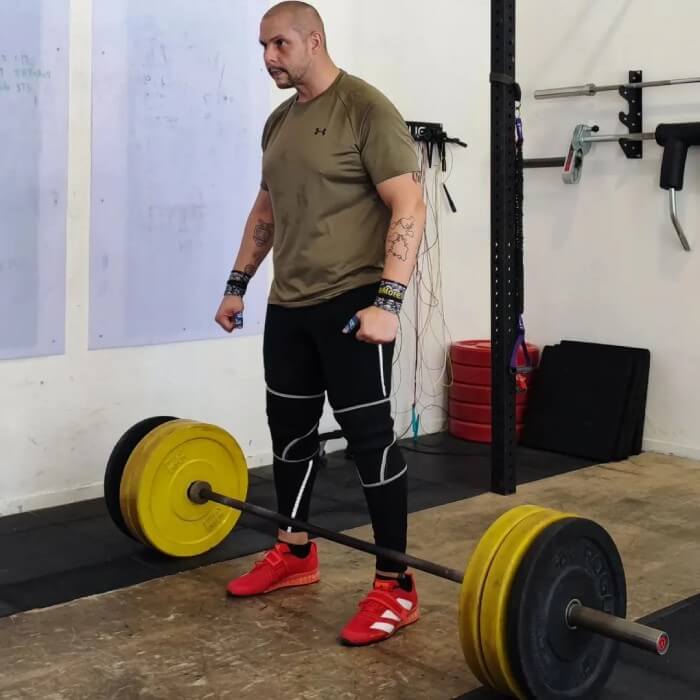
One of the most important things with weightlifting shoes is the grip, which is almost perfect with the Adipower III. The rubber soles are stable, grippy, and have great traction, so you can be sure you’ll remain planted even during rapid movements.
Adidas always pays attention to details, which is what makes them stand out from the crowd. A clear example of this is the perforated toe holes, which make the shoes even more breathable and comfortable, while the padding in the rearfoot prevents discomfort during long lifting sessions.
They may not be the best for wide feet because the toe box is on the narrower side, but if you’re patient enough and push through, you may be able to break it in a little. For narrow and average feet, however, these gym trainers for men will be great.
One of the most important things with weightlifting shoes is the grip, which is almost perfect with the Adipower III.
Positives:
Could be better:
13. Sabo Deadlift Shoes
Sabo has been making athletes’ shoes for more than 10 years, and their shoes are very unique and innovative. They’re always looking for ways to improve their products, and although these could use some improvements, they’re still really good.
These gym training shoes for men are designed to meet the needs of deadlifters, and their shape is anatomical and designed for deadlifting. The sole is made of high-density rubber and has an ultra-thin profile, which results in a blend of stability and flexibility that’s vital to proper deadlifting technique (and hard to come by).
Two lateral straps allow you to make them as tight as you want, and this can make a lot of difference when it comes to finding the perfect fit. The high-cut upper is comfortable and won’t rub against your skin.
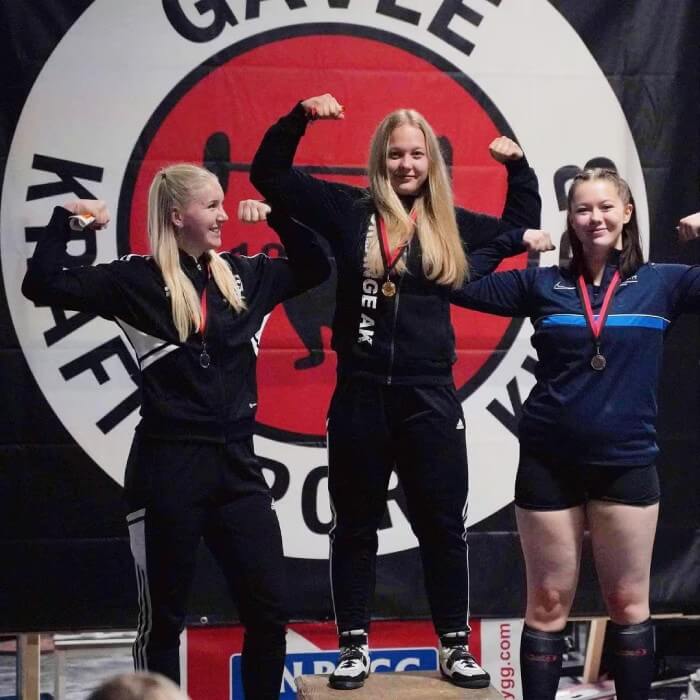
The side support in the outsole is one of the best features these shoes have because it allows you to maintain your footing without worrying about your feet rolling over, which can be the case with slippers.
Once you see all of the features listed on paper, everything looks fantastic, but these shoes could use some work. They have a really weak arch support and a flimsy heel cup. If Sabo took care of these issues, the shoes would be exceptional.
These gym training shoes for men are designed to meet the needs of deadlifters, and their shape is anatomical and designed for deadlifting.
Positives:
Could be better:
14. INOV-8 F-Lite G 300
- Heel-to-toe drop: 6mm
- Stack height: 14mm heel, 8 mm forefoot
- Available sizes: 7.5-13
- Fit: Wide
- Weight: 300g
- Material: Rubber sole, ETPU footbed, EVA midsole
- Outsole pattern: 360 Rope-Tec traction with 2mm lug depth
- Best uses for: Cross-training, weightlifting, running, jumping, climbing, high-impact lifting, cardio
F-Lite G 300 by Inov-8 are some of the best cross-training shoes you’ll find and they’re perfect for wide feet. It’s designed with a focus on weightlifting and high-impact activities and has some really nice features.
At 300 grams, they’re very lightweight, which is a crucial factor for cross-training shoes. If you’re wearing lightweight shoes, you won’t have to drag any excess weight on your feet and your performance will be better because you’ll move more efficiently.
The shoes are made using innovative materials. The Graphene PowerHeel is designed specifically for weightlifting and gives a solid foundation. It allows you to keep your form correct during squats, deadlifts, etc.
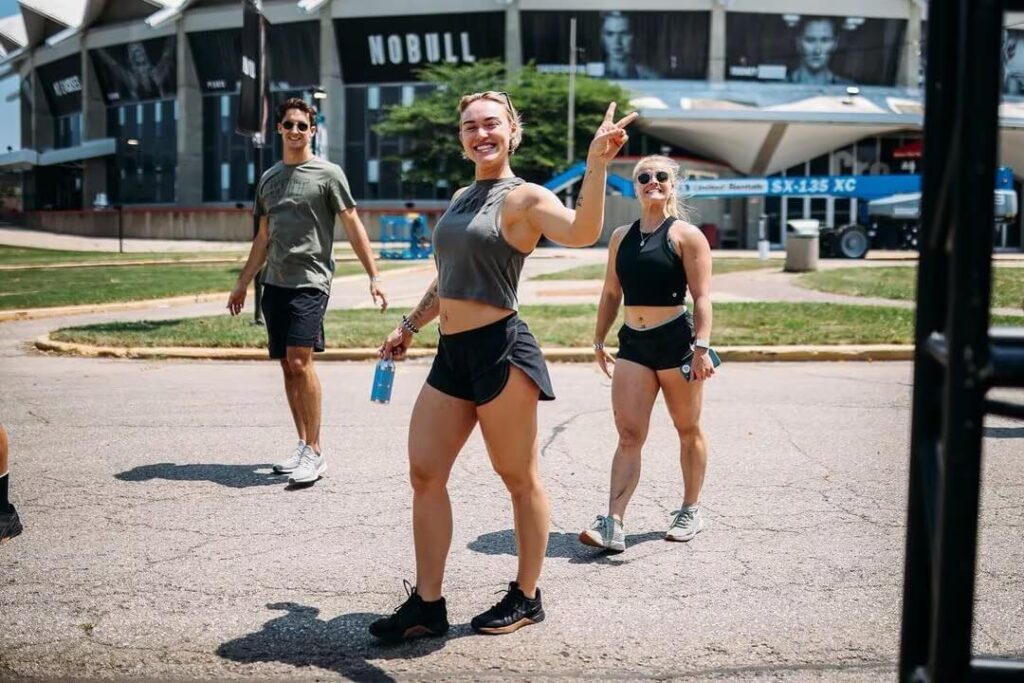
Traction is exceptional due to the Graphene-enhanced rubber sole compound – you can tackle sprints, rope climbs, or any other agility exercises easily, and your shoes will support you with each step.
With a wrap-around upper cage, these shoes provide an all-around support for your feet, and the Rope-Tec protection that’s built into them minimizes wear and tear.
If your feet are not wide, you probably won’t like them because the laces can’t be tightened enough to be secure on narrow or even average feet. Nevertheless, as far as shoes for wide feet go, these are a winner.
F-Lite G 300 by Inov-8 are some of the best cross-training shoes you’ll find and they’re perfect for wide feet. It’s designed with a focus on weightlifting and high-impact activities and has some really nice features.
Positives:
Could be better:
Experts Who Contributed To This Article
Olympian with 21 years of Oly Lifting experience
20 years of Oly Lifting & Training experience
M.Sc.Eng. Biotechnology, Sports Nutritionist

Gym Shoes General Characteristics
You may not think you need a separate pair of gym shoes, but you really do, since they’re versatile and offer great performance. Besides, if the shoes you’re wearing are not suitable for your workout, you won’t get the most out of them and in some cases they can increase risk of injuries.
Gym shoes combine breathability and stability with a sleek modern design and can be used for a wide range of workouts.
They have a well-balanced heel-to-toe drop and help you keep proper form. If you’re doing high-impact activities, then the shoes you’ll wear will have cushioning to make your workout more comfortable and prevent you from getting tired too soon.
Our Sports Scientist, Sergiy Putsov, said this:
“In my Olympic weightlifting experience, the best shoes are those with a raised heel, solid base, secure strapping, and big toe box. Regarding brands, I can recommend Adidas Adipower - due to their stability, support, and enhanced ability to maintain proper form during lifts.”
Another thing gym shoes have is the outsole pattern, which is used for traction on various surfaces. This means that they’re suitable for both indoor and outdoor activities.
No matter what kind of exercises you do, keep in mind that the shoes you wear may affect how your body responds to the workout.
6 Main Gym Shoe Types
Since we’re dealing with specialized shoes, there’s no one-size-fits-all solution: the shoes you’ll wear depend on the type of workout you plan on doing.
It’s easy to get overwhelmed and stressed by the number of shoes on the market, but the truth is, they can all be divided into several main types.
1. Running Shoes
Running shoes are designed for cardio lovers and have a lot of soft cushioning and support for forward motion. They are lightweight, flexible, and absorb impact. They’re good for whatever type of running you like: outside, on the treadmill, jogging, HIIT, etc.
2. Cross-Training Shoes
If you want versatility, then you need cross-training shoes. They’re meant to handle a lot of different activities like strength training, plyometrics, and agility exercises. They are stable, offer lateral support, and have different levels of cushioning. For those that have fitness routines encompassing different workouts, these are a must-have.
3. Lifting Shoes
You cannot go without lifting shoes if you’re weightlifting because you need a stable base for stable lifts, and that can only come from specialized shoes. Lifting shoes have a raised heel and solid construction and promote proper body alignment. They prioritize support and power transfer, both of which you need for lifting with precision.
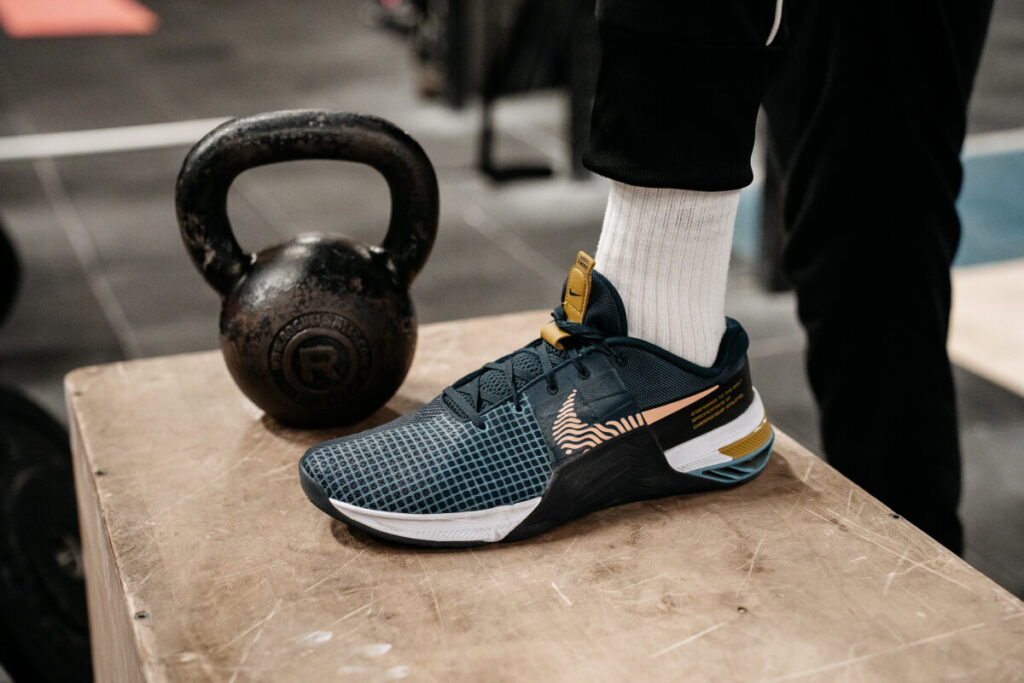
4. Minimalist Shoes
They’re called “minimalist” because they give a barefoot feel and promote natural foot movement. Often used for bodyweight exercises and functional training, they have a low heel-to-toe drop, minimal cushioning, and flexible design.
They can also make your muscles stronger because, with the minimal cushioning and support, your body needs to work harder to keep itself stable.
5. Cycling Shoes
Ideal for spin classes and indoor cycling, these shoes have a stiff sole that transfers power to the pedals. They usually have cleats that can be attached to the bike’s pedal.
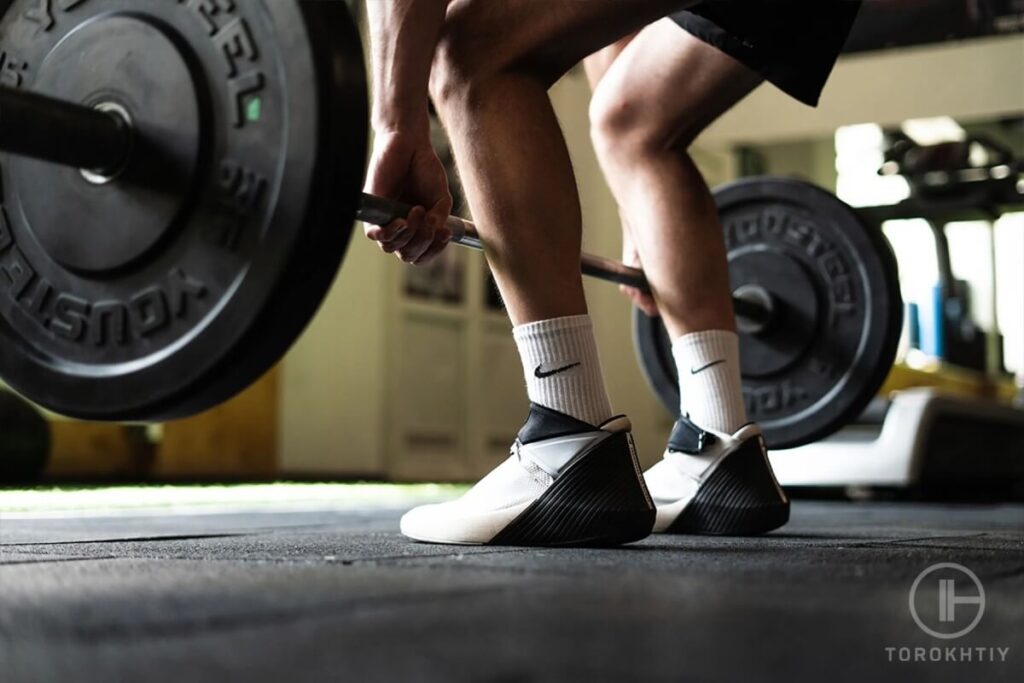
6. Trail Running Shoes
Trail shoes are used by those who like to run outdoors on rugged terrain. They’re heavy-duty, durable, grippy and have protection against uneven surfaces and debris. They offer a lot of support and make sure you stay stable on uneven ground.
| NEED/ACTIVITY | SHOE TYPE | KEY FEATURES | IDEAL FOR |
|---|---|---|---|
| Cardio/Running | Running shoes | Soft cushioning, support for forward motion, lightweight, flexible, impact absorption | Running outside, running on a treadmill, jogging, HIIT |
| Versatile Workouts | Cross-Training shoes | Stable, lateral support, various cushioning | Strength training, plyometrics, agility exercises |
| Weightlifting | Lifting Shoes | Raised heel, solid construction, support, power transfer | Weightlifting |
| Natural Movement | Minimalist Shoes | Low heel drop, minimal cushioning, flexible design | Bodyweight exercises, functional training |
| Cycling | Cycling shoes | Stiff sole, power transfer, attachable cleats | Spin classes, indoor cycling |
| Outdoor Running | Trail Running Shoes | Heavy-duty, durable, grippy | Running on rugged terrain |
6 Benefits Of Wearing Gym Shoes For Training
A single backpack is not going to be the ideal choice for everybody. People have different needs, tastes, and budgets, among other preferences. So, what makes the best workout backpack?
Here are some factors that might sway your purchase:Wearing the right gym shoes is a lot more than making a fashion statement; it’s a way to improve your performance and make your workout better overall.
As you saw in the previous section, there are quite a few types of gym shoes and each of them is used for something else. Let’s see how they benefit your exercises and why you should never work out without wearing proper shoes.
✅ Better Performance
Each type of shoe is designed to improve your performance. For example, running shoes provide cushioning and support for long-distance runs, while lifting shoes give you stability for weightlifting.
✅ Preventing Injury
Every pair of proper gym shoes can help reduce the risk of injuries, and wearing the wrong shoes can increase it. Take running, for example – it can be hard on your joints, but running shoes will be able to absorb some of the impact that your joints would have to deal with otherwise.
Lifting shoes, with their stable base, help you maintain proper alignment during weightlifting, and correct form is crucial for preventing injuries.

✅ Improved Stability And Balance
A lot of gym shoes, like cross-training shoes, come with features that improve balance and stability. This is very important for exercises that involve lateral movements, quick changes in direction, or heavy lifting.
Minimalist shoes, for example, promote natural foot position, which leads to better weight distribution, stability, and control – which improves balance overall.
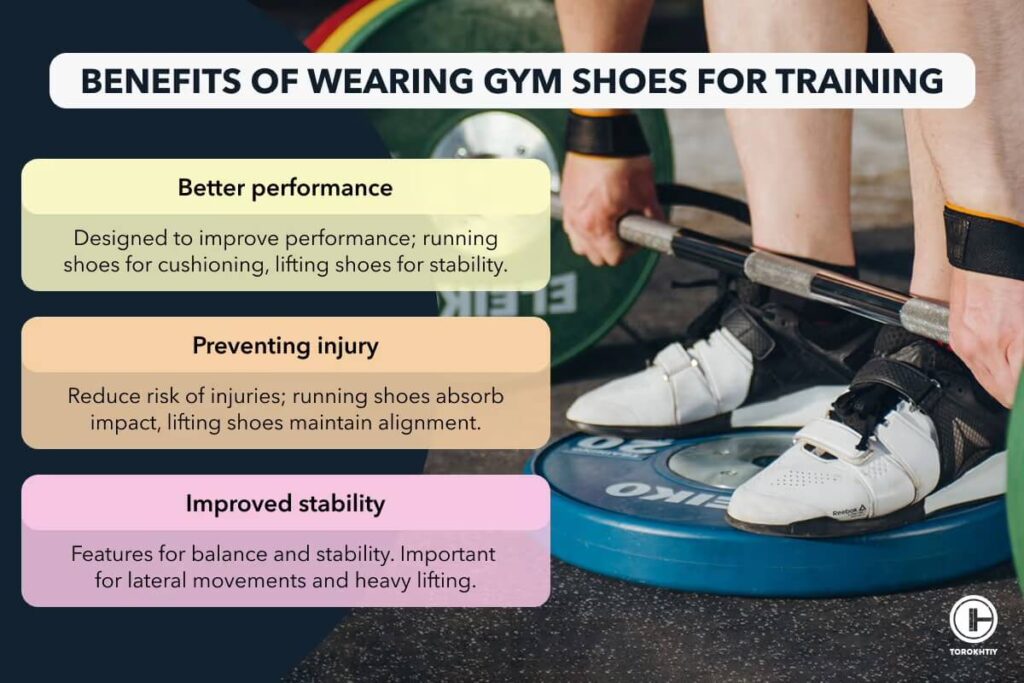
✅ Comfort and Support
Gym shoes offer the amount of comfort and support that a specific workout demands. Running shoes have a lot of cushioning to make your feet more comfortable during long runs, and weightlifting shoes focus on support and power transfer for precise lifts.
Our expert, Jacek Szymanowsky, shared his favourits:
"When it comes to oly lifting and everything involved - Reebok Legacy Lifter (III). So far the best shoes for me and my wide feet :). During deadlifts and basically everything else I like to work on the strength of my feet and calf and I choose to train barefoot or in minimalist shoes like Vivobarefoot - extra space for toes is a game changer."
✅ Optimal Foot Movement
If you’re doing bodyweight exercises, for example, proper shoes will allow your feet to move naturally, and they will also promote proper running form.
Minimalist shoes (also called barefoot shoes) are an excellent choice for this and, if you try doing bodyweight exercises in anything else, you’ll see the difference the shoes you wear can make. They can be good for weightlifting, too, because lifting barefoot can be more effective.
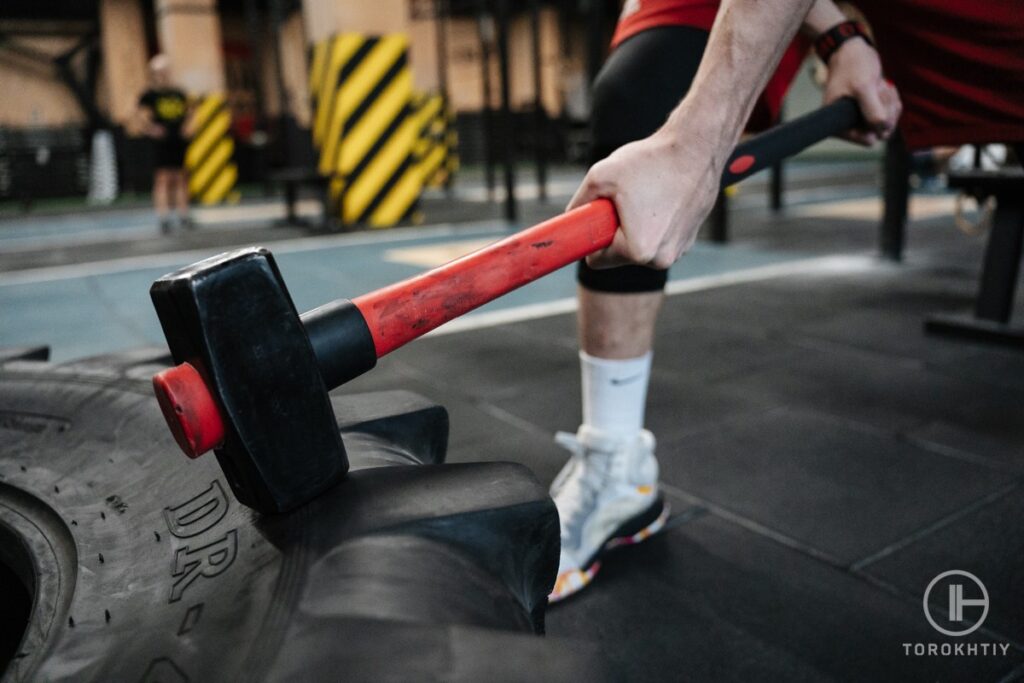
✅ Grip and Traction
When you’re running on uneven or rugged terrain, the right kind of shoes will offer enhanced grip and traction and make sure you remain stable on a terrain that would usually be difficult.
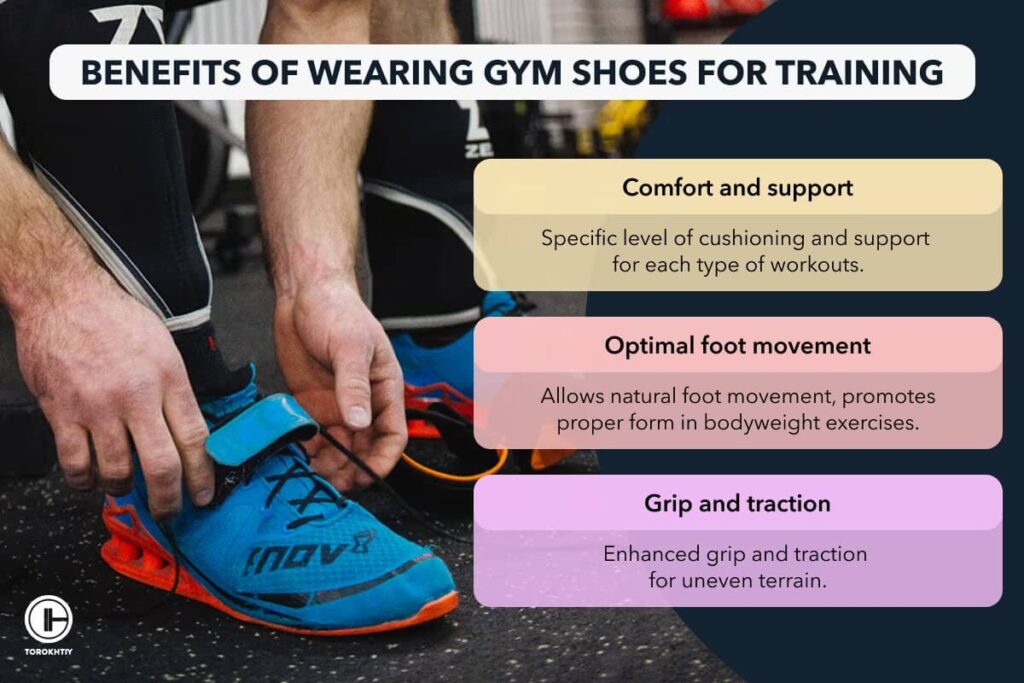
Take a look at the soles of trail running shoes and compare them to any other – you’ll notice there’s a huge difference, because trail running shoes are designed primarily for grip and traction.
Tips From the Champ
To get even more benefits, you can replace your insoles with specialized orthotics or inserts tailored to your needs. These kinds of inserts can provide extra support, make the shoes even more comfortable, and address any specific foot issues you may have.
Olympic Weightlifting Champion
What to Look for When Choosing the Best Gym Shoes?
Gym shoes can cost a pretty penny, so you want to make sure you’re investing your money into something that’s going to be functional and won’t fall apart within a few months of use.
There are several main things you need to pay attention to.
1. Designation (Purpose Of Use)
This is the first and most important thing to think about – what do you plan to use the shoes for? If you get this right, then 50% of the work is done. Whether you’re running, cycling, weightlifting, or cross-training, make sure to choose shoes designed specifically for the activity you will be doing.
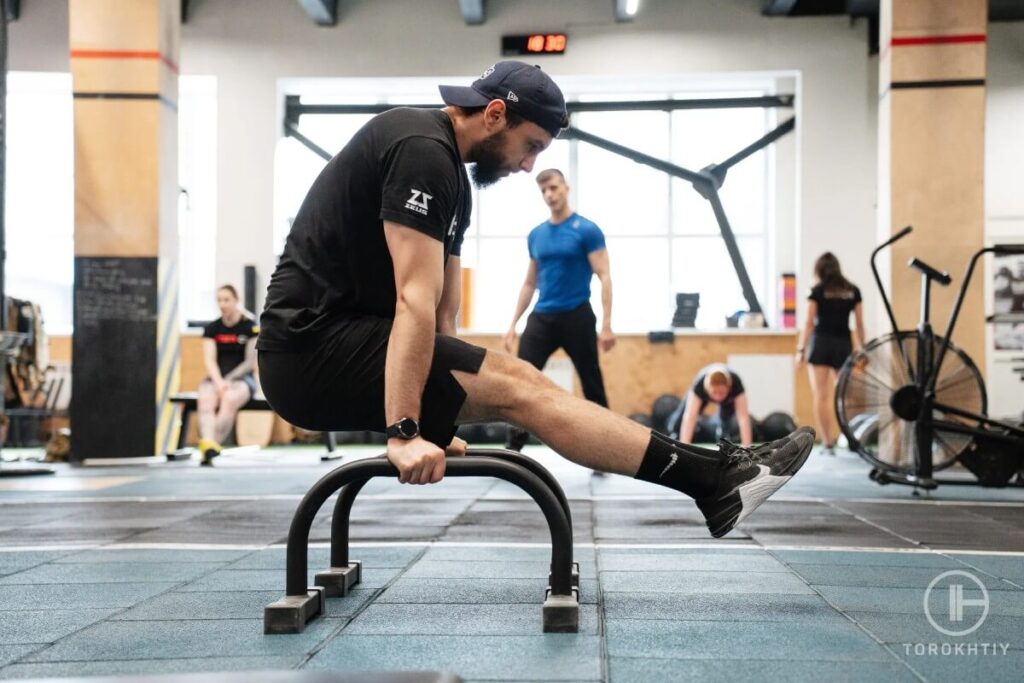
2. Outsole Pattern/Grip
The outsole also needs to match the workouts you’ll be doing. For running, look for shoes that have multidirectional treads to provide traction. If you’re weightlifting, you need shoes with a flat, stable outsole for secure contact with the ground. For cross-training, choose shoes that have soles with pivot points for agility.
3. Cushioning
Cushioning is another feature that’s going to vary depending on your activity. If you’re running, then you want a good amount of cushioning to absorb the impact.
On the other hand, if you’re weightlifting, then you want minimal cushioning to maintain stability during lifts. Basically, you can benefit from cushioning for high-impact workouts, but should be minimal for exercises that rely on stability.
Tips From the Champ
When browsing for the perfect gym shoes, you’ll have the highest chance of scoring a quality pair if you go into a specialized sports/fitness store, because you can talk to real experts to suggest ones that will fit your list of criteria.
Additionally, it is best to try the shoes later during the day when your feet are at their largest to ensure they are snug but comfy!
Olympic Weightlifting Champion
4. Heel-To-Toe Drop
This is the height difference between the heel and forefoot, which affects your gait and posture.
Running shoes have a higher drop because that encourages forward motion, while minimal shoes have zero drop because bodyweight exercises benefit from a barefoot feel.
For olympic weightlifting higher heel provides benefits allowing for more upright torso, for deadlift only you probably would like to be as close to the ground as possible 🙂
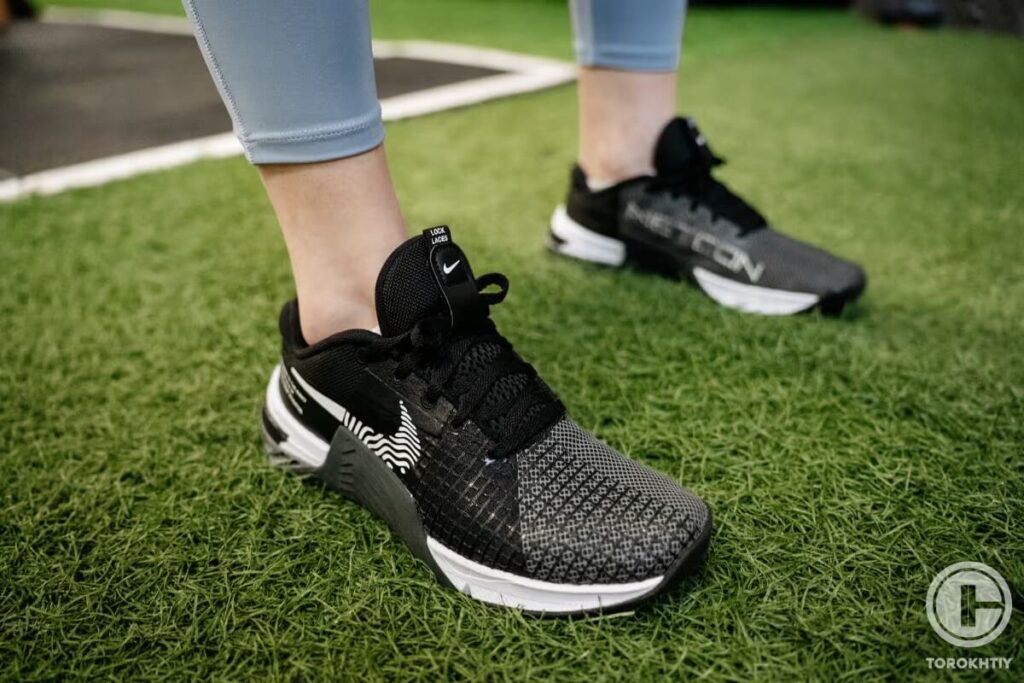
5. Upper Material Quality
You want your shoes to be breathable and durable, so you want the upper material to be of good quality. If you’re trail running, then your upper needs to be made of a durable material that protects against debris.
If you’re running, then you want breathable and lightweight materials to keep your feet cool and dry. For cross training - when you perform rope climbing - better material will translate to improved longevity of your shoes.
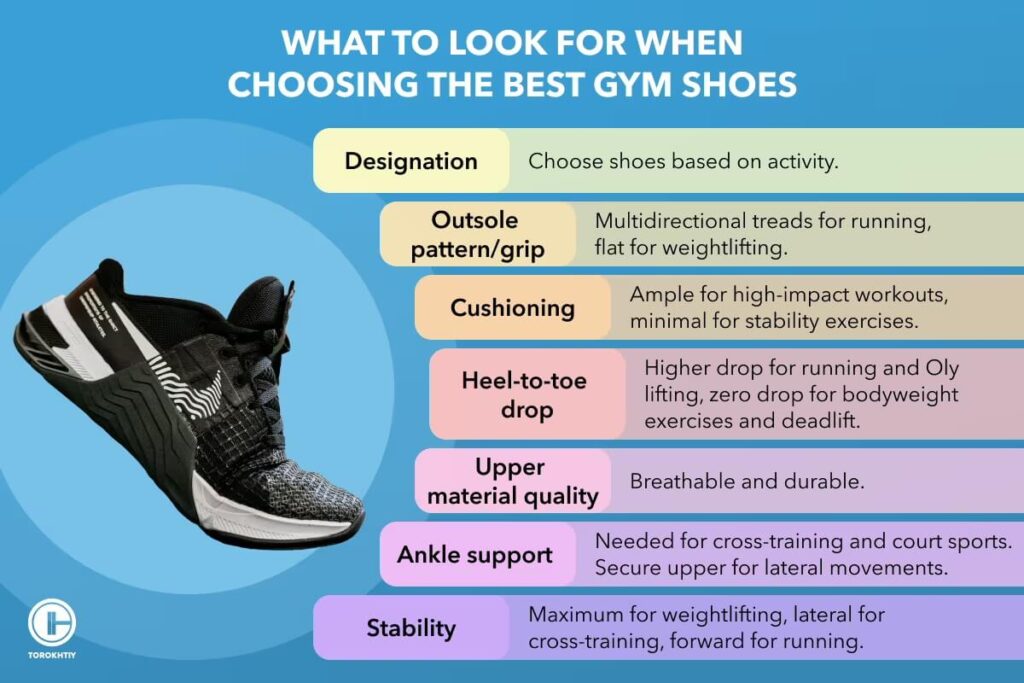
6. Ankle Support
Cross-training and court sports need ankle support for lateral movements and quick direction changes. Look for shoes with a secure upper that won’t limit flexibility but will provide support.
The Olympic Champion, Oleksiy Torokhtiy, noted:
“When lifting weights, comfort and stability in the foot are important, since the maximum load when performing is there. And here, it is important to find your brand, which will be as comfortable as possible for your feet. In my case, it took me several years to find that brand and model that I have not parted with for more than 15 years. Reebok is my personal choice. And it's worth it!”
7. Stability
Every type of shoe provides some level of stability depending on the purpose it’s designed for. Lifting shoes need maximum stability, so look for features like solid construction and a raised heel. Cross-training shoes need to have lateral support for side-to-side movements, while running shoes should focus on forward stability.
FAQ
What Shoes Are Best To Wear For The Gym?
This is going to depend on your workout routine. Think about what kind of exercises you want to do, and then choose shoes designed specifically for it.
Are Sneakers OK For The Gym?
Regular sneakers are usually not the best choice because they lack specific features that each exercise needs. You want running shoes for running, lifting shoes for weightlifting, cross-training shoes for cross-training, etc. If you wear shoes tailored to your workout, they will help your performance and prevent injuries.
What Is The Difference Between Gym Shoes And Walking Shoes?
They look different and are used for different things. Gym shoes are usually designed for a wide range of exercises and have features like cushioning, support, grip, and stability – all tailored to specific workouts.
Walking shoes are designed for walking and their priorities are cushioning (not always - barefoot shoes) and support, so your feet can stay comfortable during long walks. They’re optimized for moving forward and don’t offer the same amount of lateral support and stability as gym shoes do.
Conclusion
It’s extremely important to choose the correct gym shoes that are designed specifically for the workouts you want to do. If you’re feeling overwhelmed and don’t quite know what to pick, you can’t go wrong with the best men’s workout shoes – Nike Metcon 8.
Now it’s your turn! What differences have you noticed since incorporating gym shoes into your workouts? How has your performance improved? Do you have a favorite pair of shoes? What exercise do you think can benefit most from correct gym shoes?
Leave your tips and opinions in the comment section and let’s discuss! 😊
Cheers!
Also Read:
- Best Belt for Olympic Weightlifting
- Best Deadlifting Socks
- Best Weightlifting Shoes
- Best Reebok Functional Fitness Shoes
- Best Shoes for Leg Day
- Best Weightlifting Shoes for Women
- Best Nike Training Shoes
- Best Running and Lifting Shoes
- Best Athletic Shoes for Women
References:
- Bruno Tirotti Saragiotto, Tiê Parma Yamato, Alexandre Dias Lopes, “What Do Recreational Runners Think about Risk Factors for Running Injuries? A Descriptive Study of Their Beliefs and Opinions,” Journal of Orthopaedic & Sports Physical Therapy 44, no. 10 (2014): 733-738, https://pubmed.ncbi.nlm.nih.gov/25155860/ (accessed Oct. 27, 2023).
- Daniel J. Southwell, Shane A. Petersen, Tyson A. C. Beach, Ryan B. Graham, “The Effects of Squatting Footwear on Three-Dimensional Lower Limb and Spine Kinetics,” Journal of Electromyography and Kinesiology 31 (2016): 111-118, https://www.sciencedirect.com/science/article/abs/pii/S1050641116302322 (accessed Oct. 27, 2023).
- Kevin A. Valenzuela, Kellie A. Walters, Elizabeth L. Avila, Alexis S. Camacho, Fany Alvarado, Hunter J. Bennett, “Footwear Affects Conventional and Sumo Deadlift Performance,” Sports (Basel) 9, no. 2 (2021): 27, https://www.ncbi.nlm.nih.gov/pmc/articles/PMC7918349/ (accessed Oct. 27, 2023).
- Rory Curtis, Catherine Willems, Paolo Paoletti, Kristiaan D’Août, “Daily Activity in Minimal Footwear Increases Foot Strength,” Scientific Reports 11, no. 18648 (2021), https://www.nature.com/articles/s41598-021-98070-0 (accessed Oct. 27, 2023).
- Tomasz Cudejko, James Gardiner, Asangaedem Akpan, Kristiaan D’Août, “Minimal Shoes Improve Stability and Mobility in Persons with a History of Falls,” Scientific Reports 10, no. 21755 (2020), https://www.nature.com/articles/s41598-020-78862-6 (accessed Oct. 27, 2023).
Why Trust Us?
With over 20 years in Olympic Weightlifting, our team does its best to provide the audience with ultimate support and meet the needs and requirements of advanced athletes and professional lifters, as well as people who strive to open new opportunities and develop their physical capabilities with us.
All products we select are primarily approved and tested by the Olympic Weightlifting Champion Oleksii Torokhtiy. Under his guidance, we provide honest and reasonable assessments of the products we review by checking their characteristics, packaging, design, comfort and durability features, and general product rating. We select products from only high-quality and trusted sports brands, thus vouching for their quality.
The product testing process is described in more detail here
Author: Ihor Shymechko
Pro Olympic Weightlifter, Coach
Best Results: Snatch – 208 kg,
C&J – 240 kg
Ihor has been a professional weightlifter since 1996, boasting over two decades of competition experience. His notable achievements include clinching the European Championship in 2009 and securing a silver medal in the 105kg division at the Senior World Championships in 2011. Ihor represented his country in the 2008, 2012, and 2016 Summer Olympics. After retiring from competitive weightlifting, he transitioned to coaching, leveraging his vast experience to guide athletes who now compete on both national and international stages.
Reviewed by: Oleksiy Torokhtiy
Olympic Weightlifting Champion
Best Results: Snatch – 200 kg,
C&J – 240 kg
Oleksiy Torokhtiy is a professional athlete boasting 20 years of experience in Olympic weightlifting. With multiple European and World titles under his belt, he has showcased his prowess in two Olympic Games (Beijing 2008 and London 2012). Upon concluding his illustrious career, Oleksiy dedicated himself to coaching. By 2022, he had conducted over 200 weightlifting seminars worldwide. He is the visionary behind an international sportswear and accessories brand known for its motto, “Warm Body Cold Mind.” Additionally, he is an esteemed author and the creator of a series of training programs and eBooks.
If you have any questions/suggestions/any other inquiries considering product reviews, you can reach out to us via email – [email protected]
